Foolproof Raw Sauerkraut Recipe | Two Ingredients
This tangy lacto-fermented sauerkraut is a breeze with two ingredients and simple instructions, you will be enjoying raw sauerkraut in no time. Transform your raw cabbage into an enzyme and probiotic-rich superfood. Use a few special tools to make the job easier or get started for the first time with minimal equipment for this simple raw sauerkraut recipe.
Its time to harvest the cabbage in my zone three garden! For years my soil was too rich to produce cabbage heads- the cabbage was “all plant” and didn’t produce substantial heads before our early frost (early September). I am so excited to have grown my own cabbage this year and can’t wait to ferment and dehydrate it to enjoy later on in the year! I hope you find this tutorial helpful and inspiring- fermenting cabbage to make raw sauerkraut is so easy and rewarding.
What Is Lacto Fermented Sauerkraut?
Lacto fermentation is a cost efficient preservation method that has the potential to improve overall health with good bacteria and to ultimately strengthen your immune system. Lacto fermented sauerkraut uses the naturally occurring lactobacillus bacteria on the cabbage to break down and ferment. It is important that the cabbage is not exposed to air during this fermentation process or your ferment will get mouldy. The environment without air (anaerobic environment) paired with non-iodized salt, creates sour fermented cabbage- aka raw sauerkraut. Read about some of the health benefits of lactobacillus bacteria here. Check out my Quick + Crunchy Old Fashioned Fermented Dill Pickles for another great recipe using lacto fermentation.
Raw Sauerkraut vs. Canned Sauerkraut
Canned sauerkraut goes through a heating process that destroys a lot of beneficial bacteria and enzymes. Raw sauerkraut is packed cold and kept in a cold room or fridge for several months. Raw kraut is my favorite way to preserve cabbage as it tends to be a more vibrant green colour and has a more sour taste when compared to canned sauerkraut. Canned sauerkraut is heat processed and so it is shelf stable and can last from 3-5 years.
Key Ingredients
This recipe can easily be scaled up or down to suit your harvest.
Cabbage: cored and shredded. You can use any type of cabbage including red cabbage, purple and green.
Salt: The most important thing to consider when buying salt for preservation is to purchase salt that is non-iodized. Rock Salt and sea salt are great options. I tend to use pickling salt in all of my fermenting endeavours.
Equipment
These tools make the job easier! The #1 thing to remember when making raw sauerkraut and other ferments is that all of your tools, bowls, and hands should always be clean and sanitized!!
Cabbage shredder Shred more cabbage at once with less chopping using a cabbage shredder. Alternatively you can use a knife, mandolin, or food processor to shred your cabbage. If you plan on regularly making raw sauerkraut and other ferments, this tool will last a LONG TIME and is worth the investment.
Cabbage Tamper A cabbage tamper helps to squish the cabbage down, promoting liquid release and helping along the fermenting process. You can also use your hands, the bottom of a glass, or a flat-bottomed rolling pin.
Fermenting Crock I love my Ohio Stoneware Crock. This is something that will last my lifetime and can easily fit 8+ heads of shredded cabbage in it. You can also sour cabbage whole in it. Other options include a large mason jar or other glass jar. The fermenting crocks usually have weights that are built in to hold your ferments down. If you don’t have glass weights or stone wear weights you can use a large ziplock filled with water, a plate, and I have even heard of people using a large rock to keep the cabbage from floating to the top of the jar or crock.
Fermenting Weights– I love Mason Tops fermentation weights to ferment in individual glass jars. If you don’t have a big crock or limited space, these are a great option. This kit comes with regular and wide mouth sizes.
Large Mixing Bowl Give yourself a large bowl to work with! If you don’t have a big enough bowl, massage the cabbage in smaller batches in a large pot.
How to Cut Cabbage With and Without a Cabbage Shredder
Knife: Peel back the outer leaves of the cabbage and then quarter or eighth it. Remove most of the core, leaving a small amount to hold the cabbage wedges together. Thinly slice the wedges for fine sauerkraut.
Mandolin: Peel back the outer leaves of the cabbage. Quarter the cabbage and then cut each wedge into manageable sized chunks for your mandolin slicer. My slicer has four settings, I stick to either one or two (the smaller two of the settings) for finely sliced cabbage. If you have a spare cabbage leaf or two that have fallen off during the shredding process, simply slice them up with a sharp knife.
Food processor: Many food processors have a shredding disc! Prepare your cabbage by removing the outer leaves, quarter to remove the core, and chop it into manageable sizes for your processor. Simply install the shredding disc and feed the cabbage through the machine. Adjust the fineness based on your preference.
Cabbage shredder: Peel back the outer leaves of the cabbage and discard them. Most cabbage shredders will be able to handle a full head of cabbage without any extra chopping. Shred as much of the cabbage as you can until it is no longer safe and finely chop any remaining cabbage with a sharp knife.
Raw Sauerkraut Flavour Variations
Shredded carrots: Many traditional Polish sauerkraut recipes include shredded carrots. Add the carrots before your start massaging the cabbage and proceed as usual.
Spicy Radish Sauerkraut: Add 1 cup of thinly sliced radish to a medium head of shredded kraut and proceed as usual.
Apple-Beet: Shred apples and/or beets to amount to one cup and add to one medium head of shredded cabbage and proceed as usual.
Gingery-Dill Sauerkraut: Add 1 tablespoon of freshly grated ginger and 1 tablespoon of dill to one medium head of shredded cabbage. Proceed with the raw sauerkraut recipe as usual.
Spiced- Many people like to add pickling spice, mustard seed, or plain caraway seeds to their sauerkraut. Add to suit your tastes.
Exactly How to Make Raw Sauerkraut
Step 1. With clean hands, peel the outer leaves of the cabbage to ensure you have clean and unblemished leaves.
Step 2. Quarter your cabbage and remove most of the spine, leaving a very small amount intact to help hold the cabbage together when you are shredding it. If you are using a cabbage shredder, you can skip this step.
Step 3. Using your preferred method (knife, shredder, mandolin, food processor), thinly slice the whole cabbage and place it in a large bowl.
Step 4. Sprinkle 1 tablespoon of salt over the shredded cabbage, loosely toss, and leave sit for 15 minutes to soften and relax. For reference, you should be using approximately 1 tablespoon of salt per 2.2 pounds of cabbage (1kg).
Step 5. Work the cabbage with your hands, squeezing and massaging for around 10 minutes or until it has become soft and juicy. There needs to be enough juice/brine to cover the cabbage when weighed down. If you are concerned about not having enough liquid overtop of the cabbage, continue to work it or create extra brine by combining 4 cups of filtered (chlorine-free) water with 1 tablespoon of salt and pour over the cabbage as needed.
Step 6. Press the cabbage into your crock or glass jar using your hands or a cabbage tamper. Weigh it down with fermentation weights, a ziplock filled with water, a plate with something heavy set on top, etc… ensure that there is as little floating as possible. Any cabbage that is exposed to the air has the potential to mould and may need to be scraped off of the top daily. Stow away in a dark place away from direct sunlight for the fermentation time.
Step 7. The sauerkraut should take around 10 days to properly ferment. As with my Old Fashioned Fermented Dill Pickle recipe, don’t be afraid to open your raw kraut up, smell, taste, and feel. The flavour should be complex, tangy, sour. The sauerkraut will become slightly less salty, and more sour as it ferments because of the lactic acid.
Step 8. After the first three days, poke the sauerkraut with a sanitized wooden spoon to release any trapped gasses and place the weights and lid back on. The kraut is finished when the lactic acid bacteria have done their job when it is fairly translucent with good crunch and tang. Depending on the temperature of your house, the ferment could take a few days longer or be ready a few days early. Taste, taste, taste.
Step 9. When the kraut is ready, store it in sanitized jars in a fridge for 6 months for ultimate flavour and texture and up to two years for long-term storage. Raw sauerkraut can be frozen in freezer-safe ziplock bags or airtight containers but it will kill many of the beneficial bacteria that prevent spoilage and contribute to a healthy gut biome.
Batch + Storage
This basic sauerkraut recipe yields around 12 cups (3 quarts) of raw sauerkraut depending on the size of your cabbage heads. It is a big-batch recipe but it can easily be halved or quartered for a more modest amount of kraut- or scaled up to accommodate your harvest!
Store in the fridge in an airtight container or bag. For ultimate flavour and texture, raw sauerkraut should be consumed within 6 months but can be kept for up to two years under ideal conditions.
Raw Sauerkraut can be frozen in an airtight bag or container but this is not the recommended method of preserving.
How to Eat Raw Sauerkraut (Recipe Inspiration)
Making your own fresh sauerkraut is both economical and rewarding. Read on to find some recipe inspiration to use up some of this homemade goodness. If you find that your sauerkraut has too much salt when it is time to eat it, simply rinse it under cold water.
There are so many ways to enjoy raw sauerkraut without any fuss including: on top of your eggs, in a salsa, mashed with avocado and used as a dip, spread over avocado toast, blended into salad dressings, sprinkled on top of a hot dog or your favourite sandwich, in a salad, tossed into a stir fry, blended into your mashed potatoes, in your favorite soup etc…
Polish Sauerkraut Soup– This tangy soup is perfect for cooler days!
Polish Casserole- Turn your sauerkraut into a meal with this pasta-based casserole.
Sauerkraut Balls– These delicious sauerkraut balls appetizers are filled with kraut and ham and are rolled into balls and covered in seasoned breadcrumbs before being fried to golden perfection. They make great appetizers or snacks.
Frequently Asked Questions
Raw sauerkraut can be enjoyed on its own or in recipes like sauerkraut soup and kapusta.
Raw sauerkraut can be cooked in a frying pan, slow cooker, and even instant pot.
Yes, Sauerkraut has the most benefits to your digestive tract when it is eaten raw. Full of dietary fibre and digestive enzymes, sauerkraut is delicious when eaten raw!
Raw sauerkraut is more crunchy and tangy than cooked sauerkraut. When cooked, the flavour becomes more subtle and the shreds of cabbage become softer. Try both!
Sauerkraut can last up to 2 years raw in the fridge and from 3-5 years if canned under perfect storage conditions.
Your kraut will maintain that tangy, sour smell and light green/yellow color if it is still edible. If you notice any kind of yeasty or rotten smell or the ferment has changed colour and texture, throw it out and start fresh.
Foolproof Raw Sauerkraut Printable Recipe Card
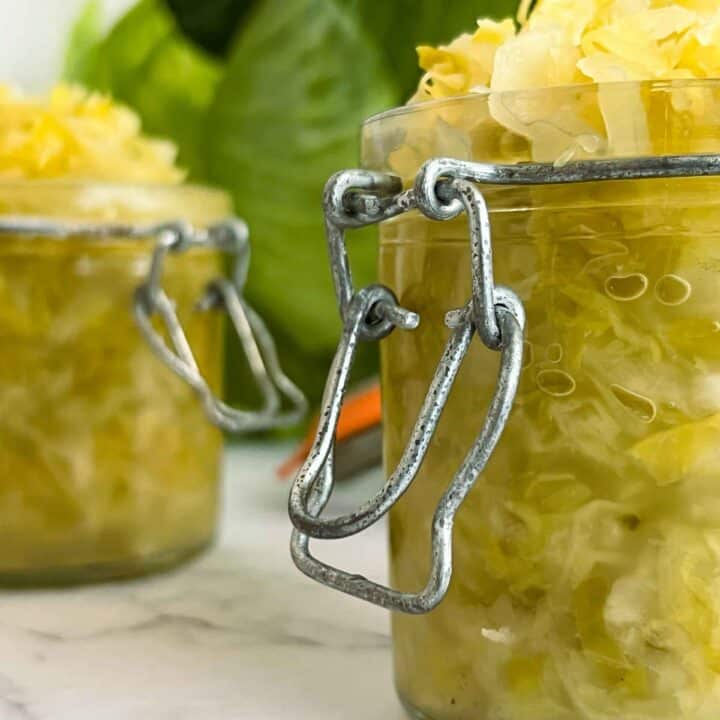
Foolproof Raw Sauerkraut Recipe | Two Ingredients
This tangy lacto-fermented sauerkraut is a breeze with two ingredients and simple instructions, you will be enjoying raw sauerkraut in no time. Transform your raw cabbage into an enzyme and probiotic-rich superfood.
Ingredients
- 2 medium sized heads of cabbage (2kg or 4.4lb)
- 2 tablespoons Non-iodized salt (rock salt, sea salt, pickling salt)
Instructions
- Peel the outer leaves of the cabbage to ensure you have clean and unblemished leaves.
- Quarter the cabbage and remove most of the spine, leaving a very small amount intact to help hold the cabbage together when you are shredding it. If you are using a cabbage shredder, you can skip this step.
- Using your preferred method (knife, shredder, mandolin, food processor), thinly slice the whole cabbage and place it in a large bowl. You may need more than one bowl depending on how much cabbage you are using.
- Sprinkle 1 tablespoon of salt over each head of the shredded cabbage, loosely toss, and leave sit for 15 minutes to soften and relax. For reference, you should be using approximately 1 tablespoon of salt per 2.2 pounds of cabbage (1kg).
- Work the cabbage with your hands, squeezing and massaging for around 10 minutes or until it has become soft and juicy. There needs to be enough juice/brine to cover the cabbage when weighed down. If you are concerned about not having enough liquid overtop of the cabbage, continue to work it or create extra brine by combining 4 cups of filtered (chlorine-free) water with 1 tablespoon of salt and pour over the cabbage as needed.
- Press the cabbage into your crock or glass jar using your hands or a cabbage tamper. Weigh it down with fermentation weights, a ziplock filled with water, a plate with something heavy set on top, etc... ensure that there is as little floating as possible. Stow away in a dark place away from direct sunlight for the fermentation time.
- The sauerkraut should take around 10 days to properly ferment. As with my Old Fashioned Fermented Dill Pickle recipe, don’t be afraid to open your raw kraut up, smell, taste, and feel. The flavour should be complex, tangy, sour. The sauerkraut will become slightly less salty, and more sour because of the lactic acid.
- After the first three days, poke the sauerkraut with a sanitized wooden spoon to release any trapped gasses and place the weights and lid back on. The kraut is finished when the lactic acid bacteria have done their job when it is fairly translucent with good crunch and tang. Depending on the temperature of your house, the ferment could take a few days longer or be ready a few days early. Taste, taste, taste.
- When the kraut is ready, store it in sanitized jars in a fridge for 6 months for ultimate flavour and texture and up to two years for long-term storage. Raw sauerkraut can be frozen in freezer-safe ziplock bags or airtight containers but it will kill many of the beneficial bacteria that prevent spoilage and contribute to a healthy gut biome.
Notes
*This recipe can easily be scaled up or down depending on your storage space, cabbage harvest, or personal preference! For reference, you should be using approximately 1 tablespoon of salt per head- 2.2 pounds of cabbage (1kg).
*Check out the full post for fun flavor variations.
*It is important to make sure that your hands and tools are always sanitized and as clean as possible to prevent spoilage.
Recommended Products
As an Amazon Associate and member of other affiliate programs, I earn from qualifying purchases.
♥Thanks for supporting me! Sharing, commenting, and reviewing all help to spread the word about Modern Harvest and help to grow the site! As an Amazon Associate I earn from qualifying purchases. I will never promote or link products that I don’t personally use or love. ♥


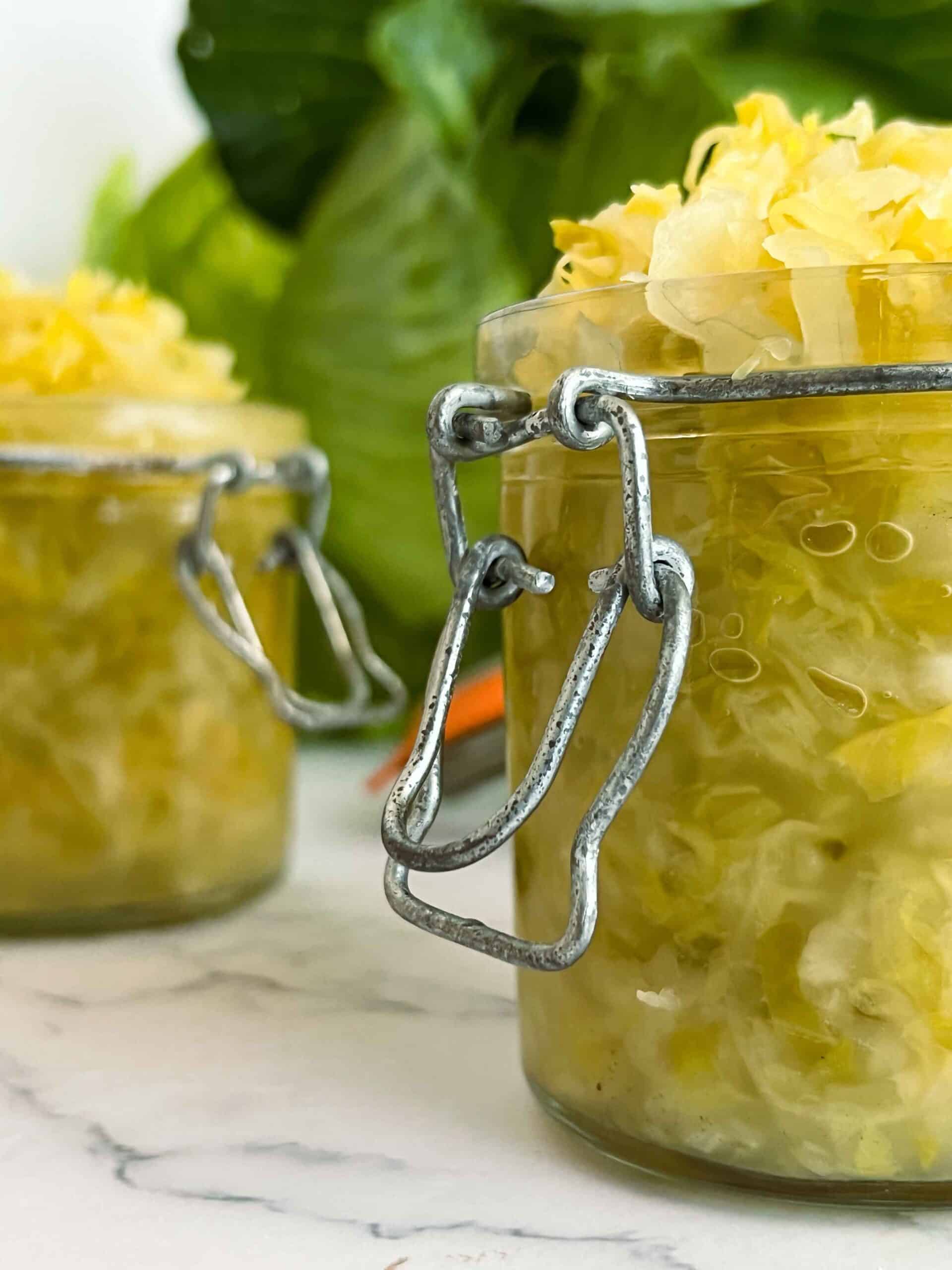
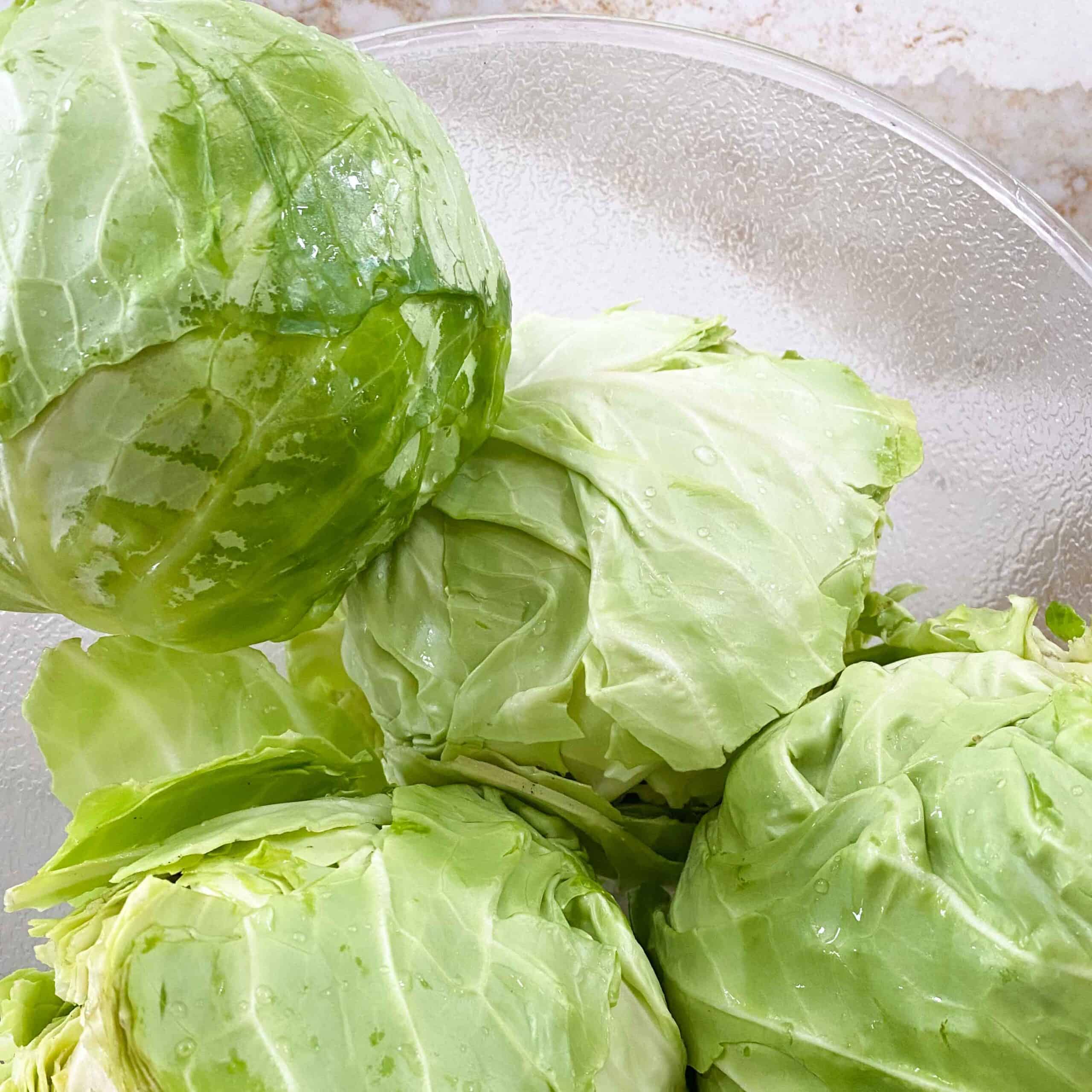
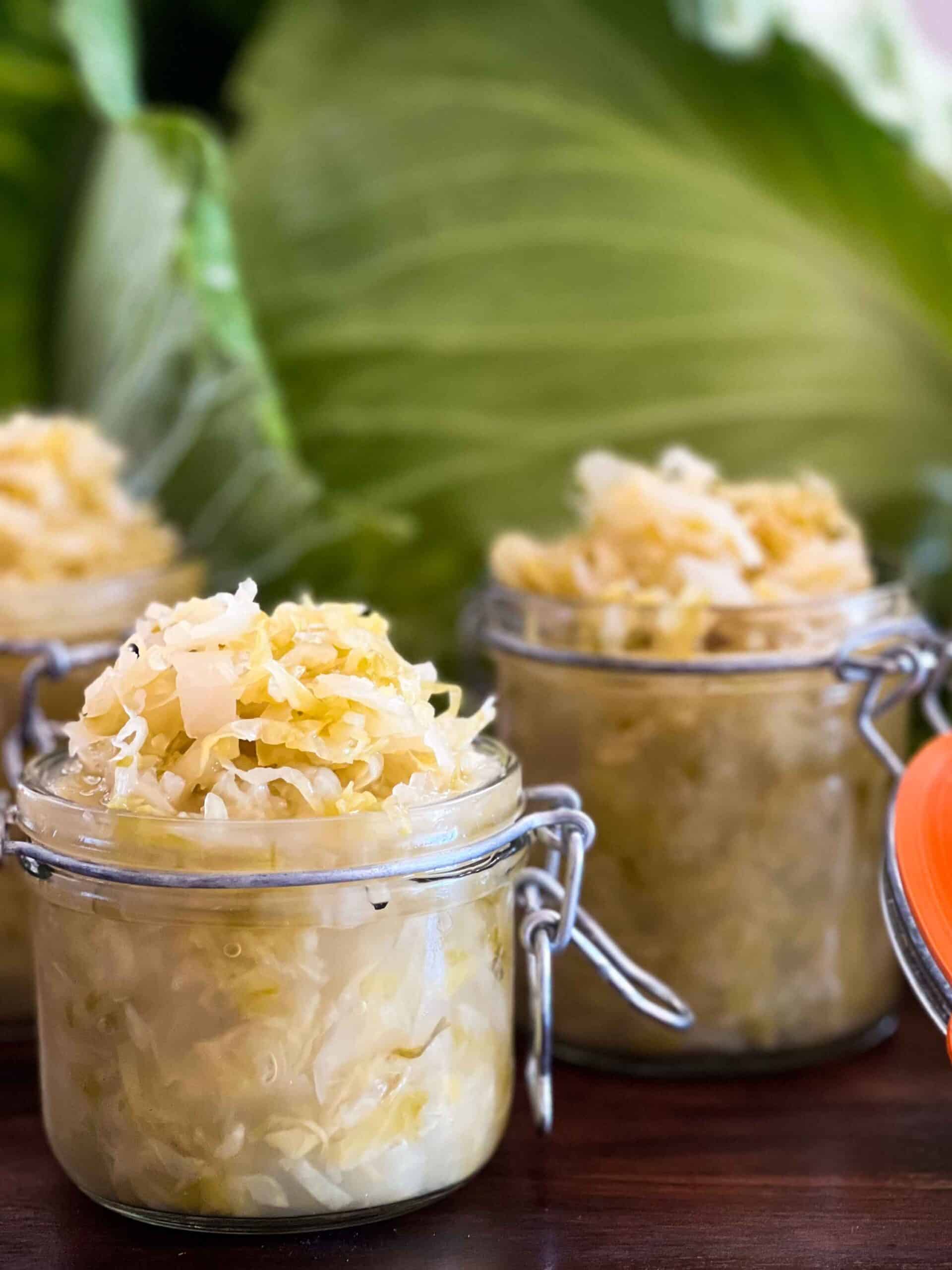
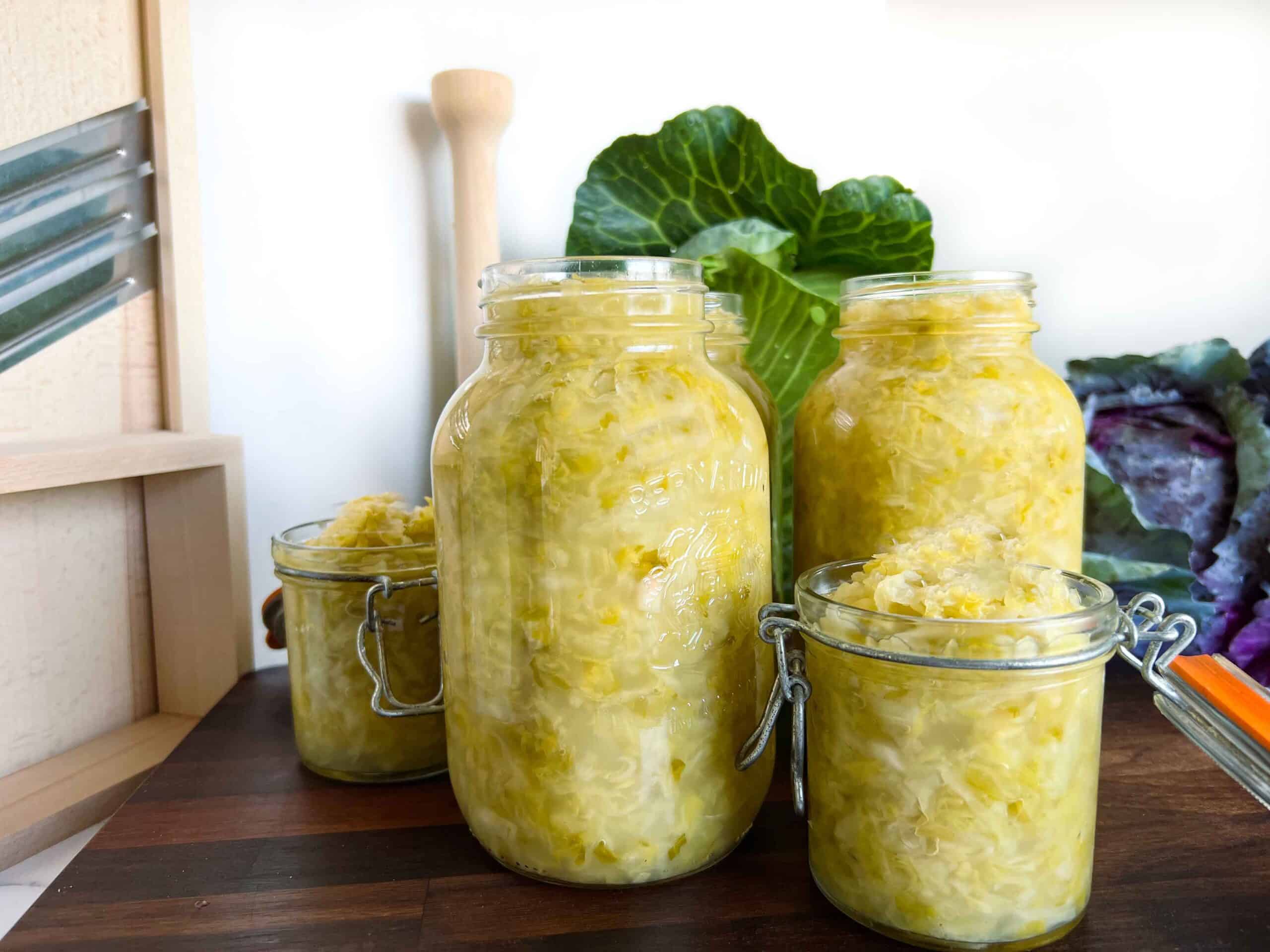
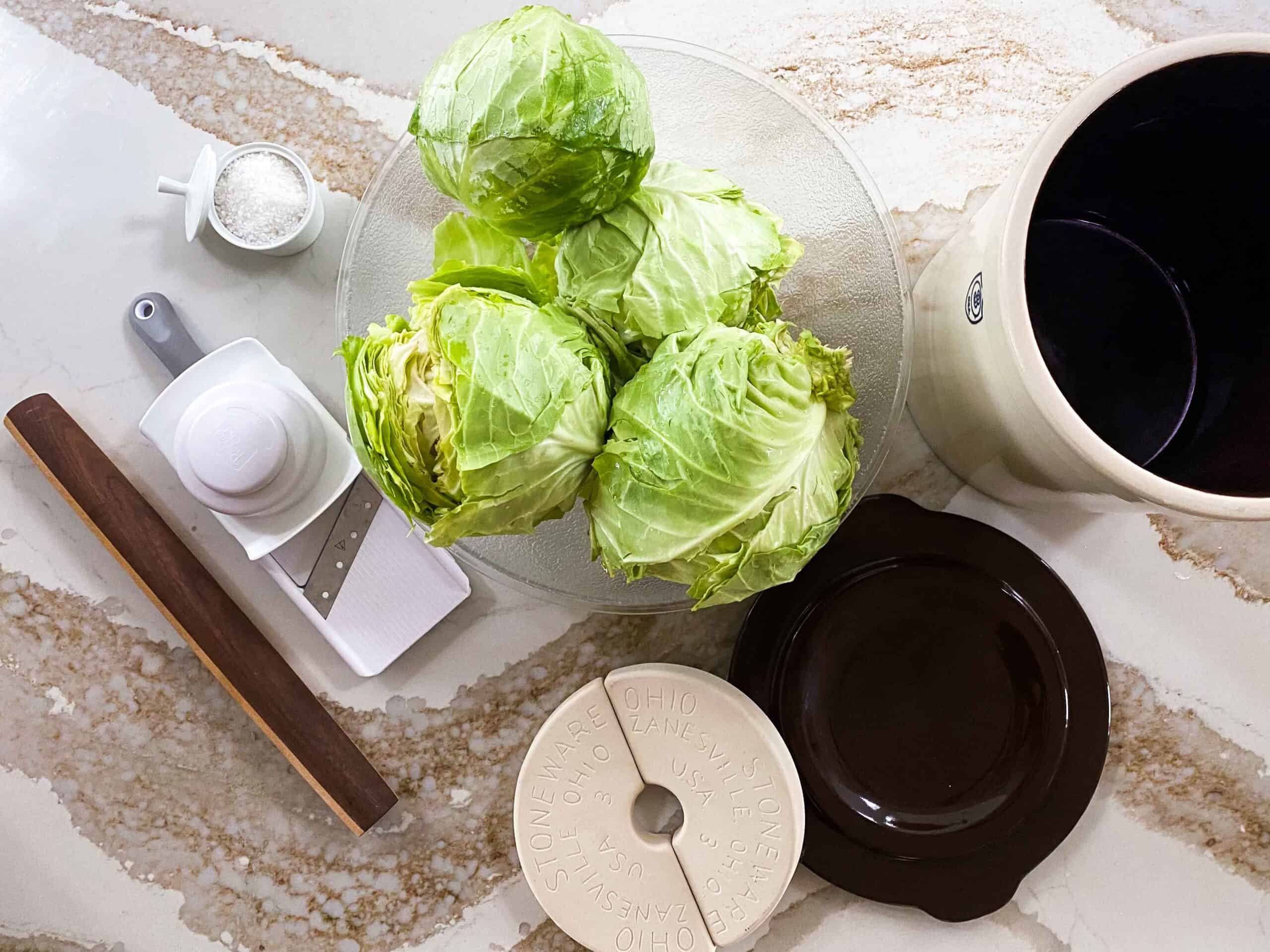
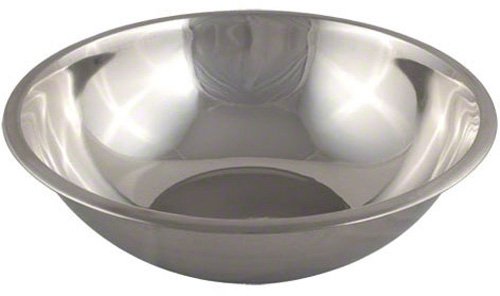
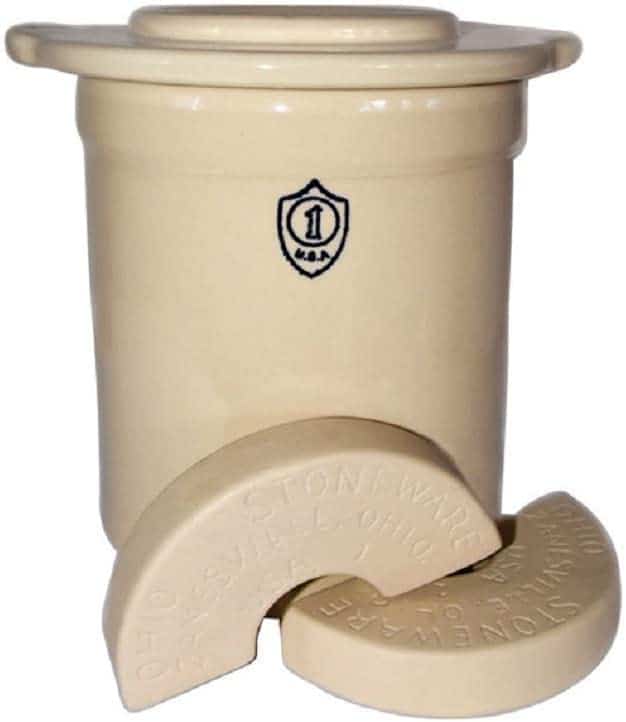
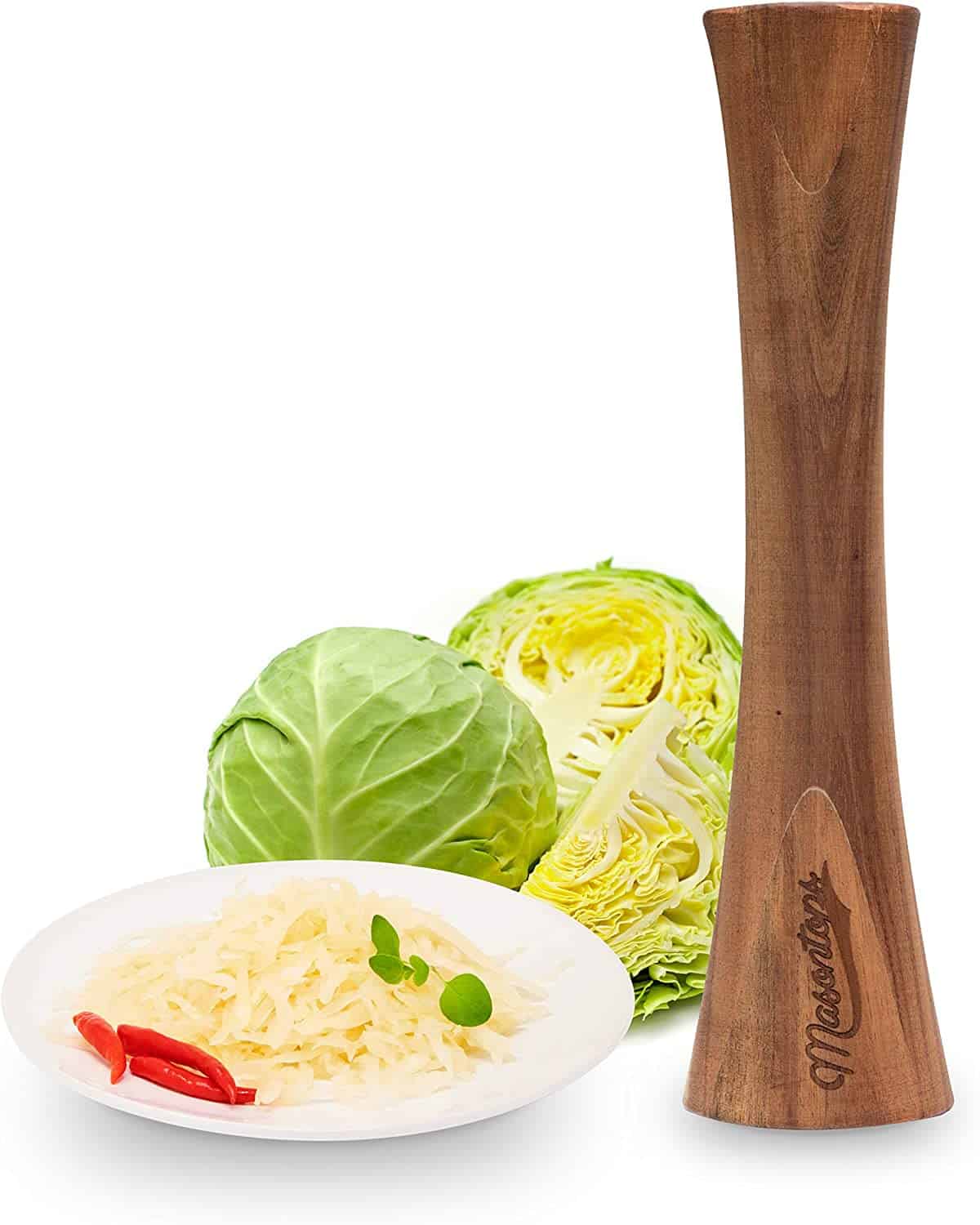
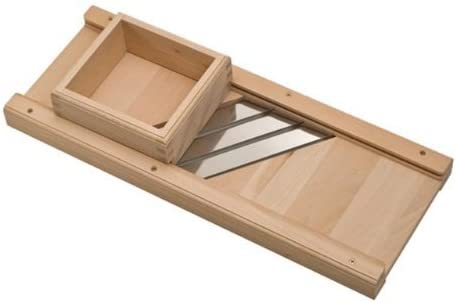

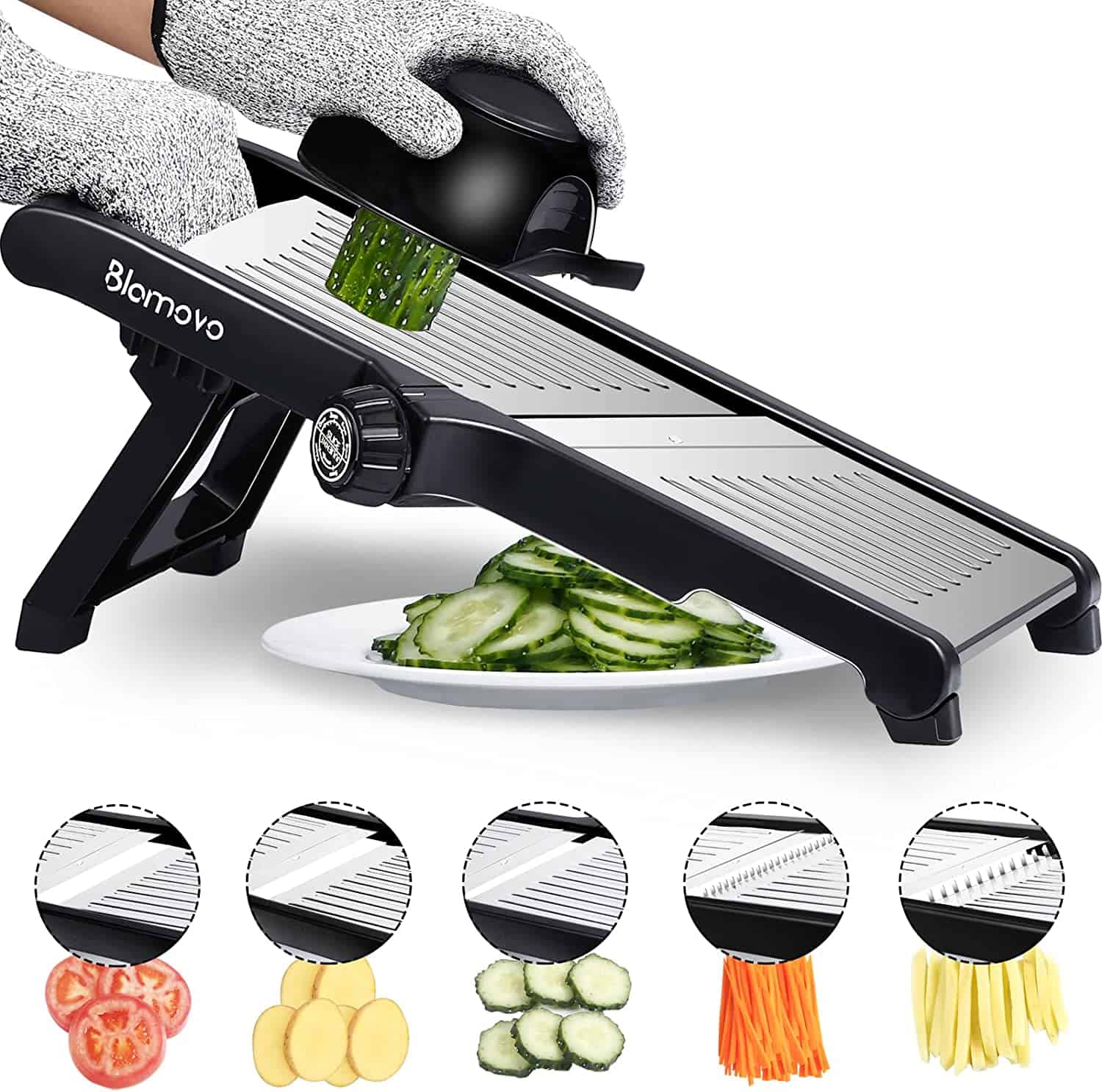
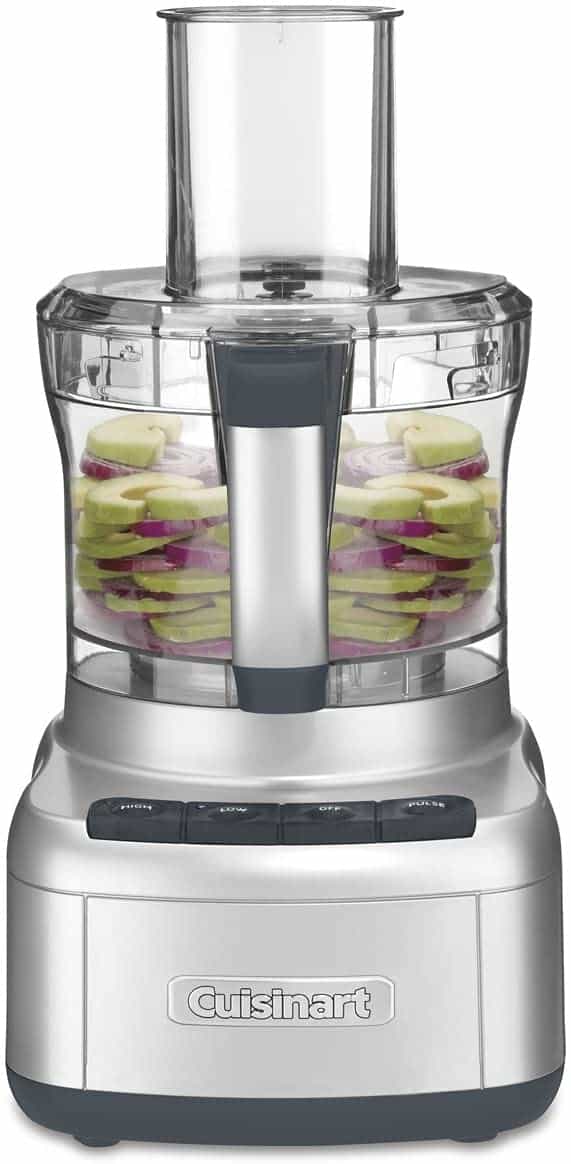
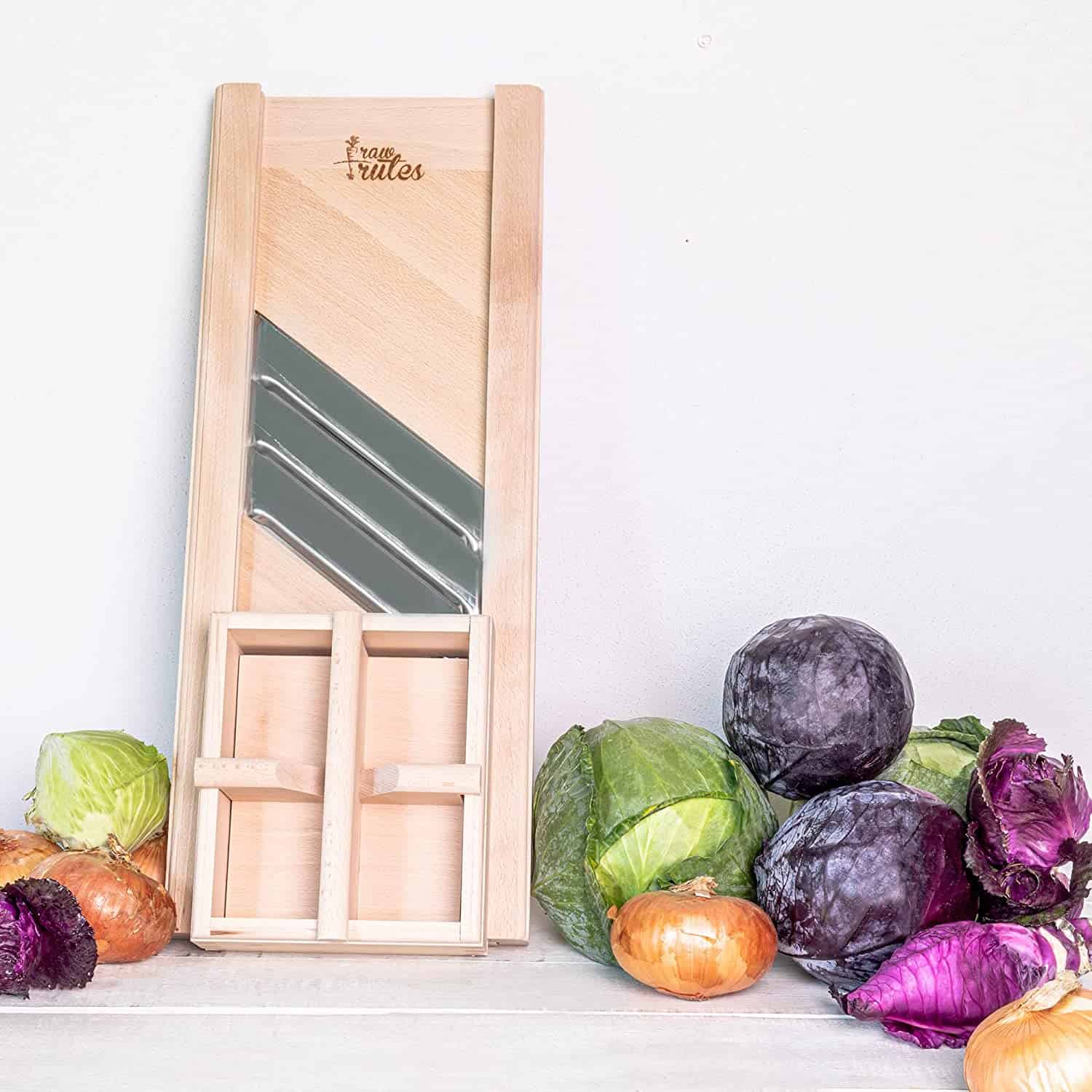
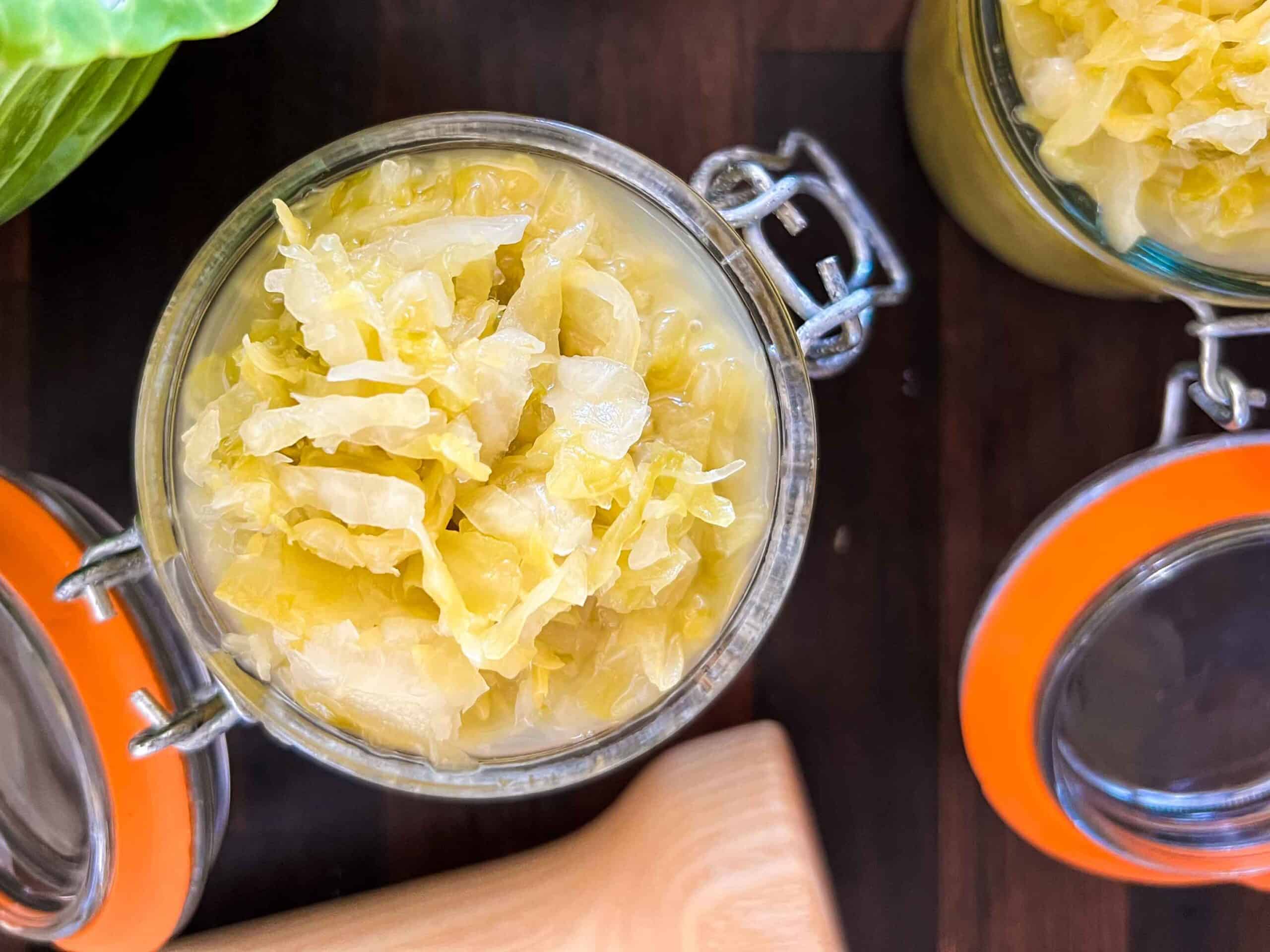
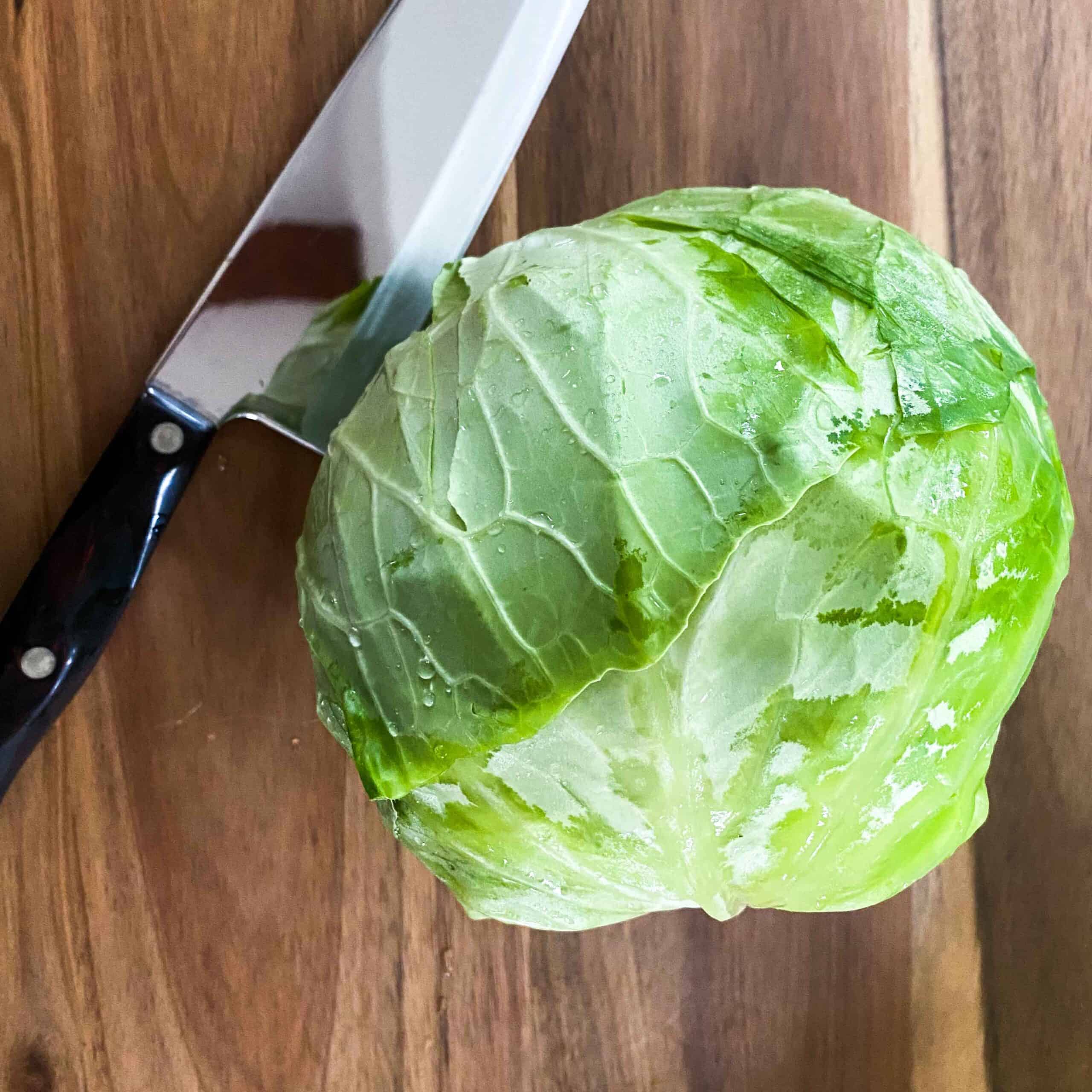
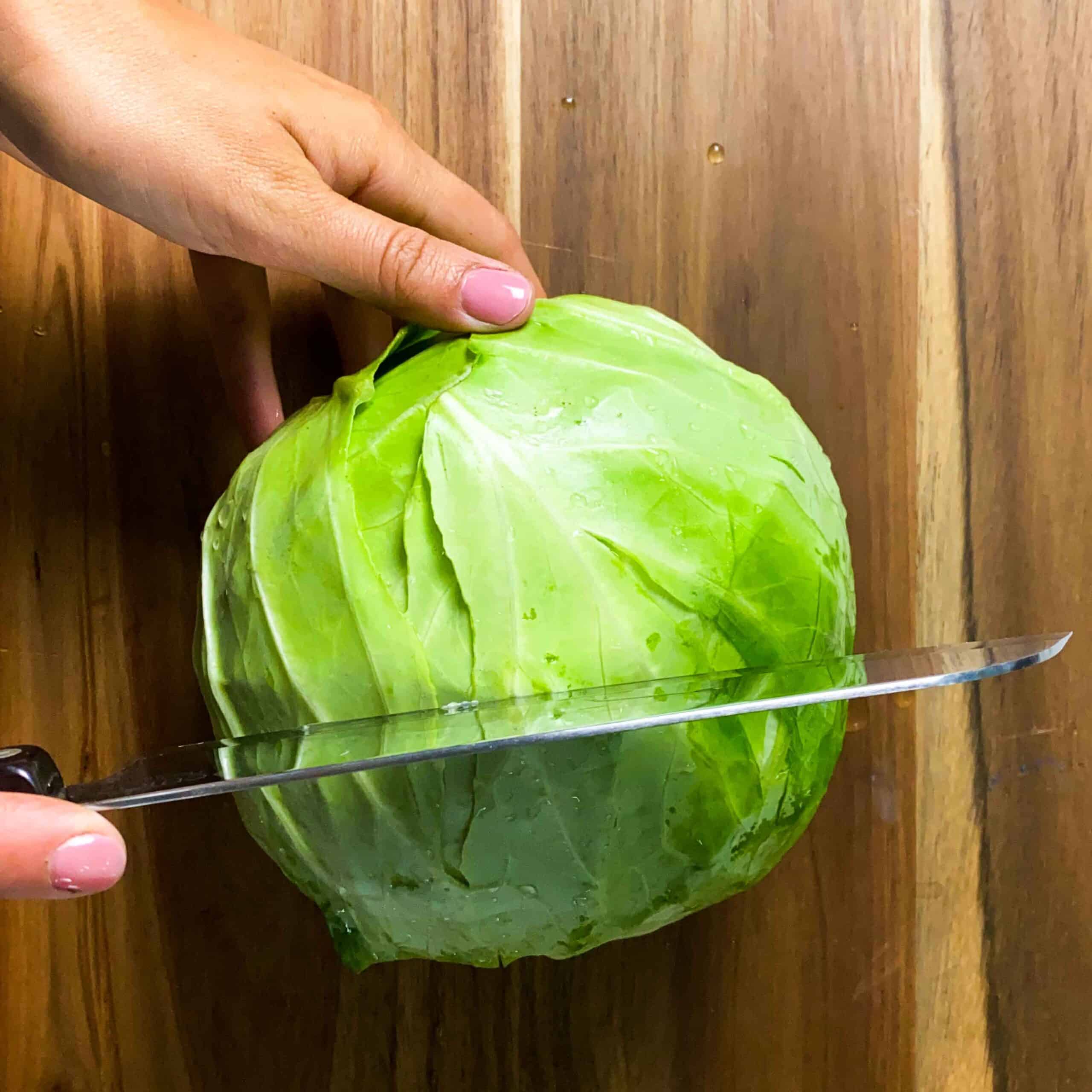
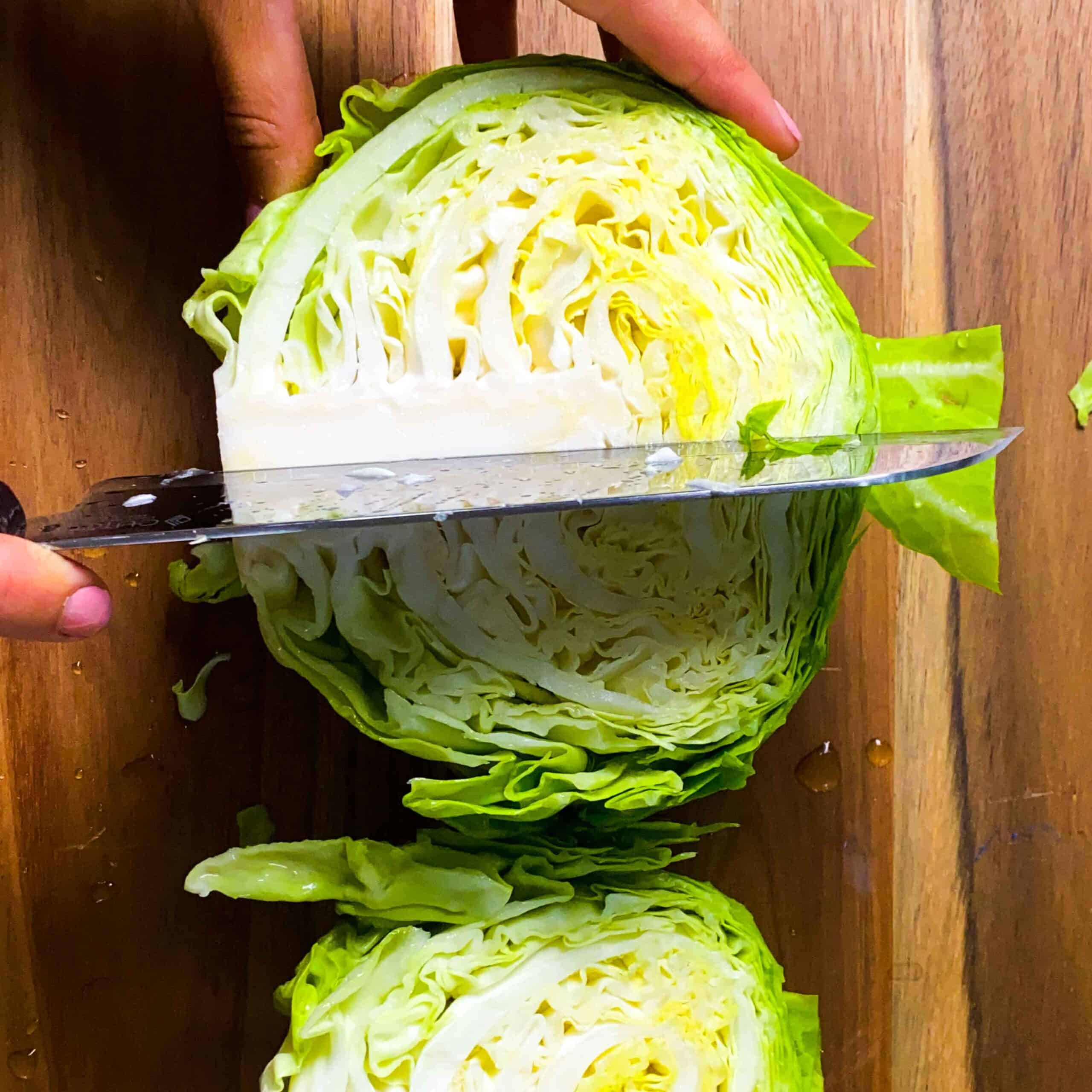
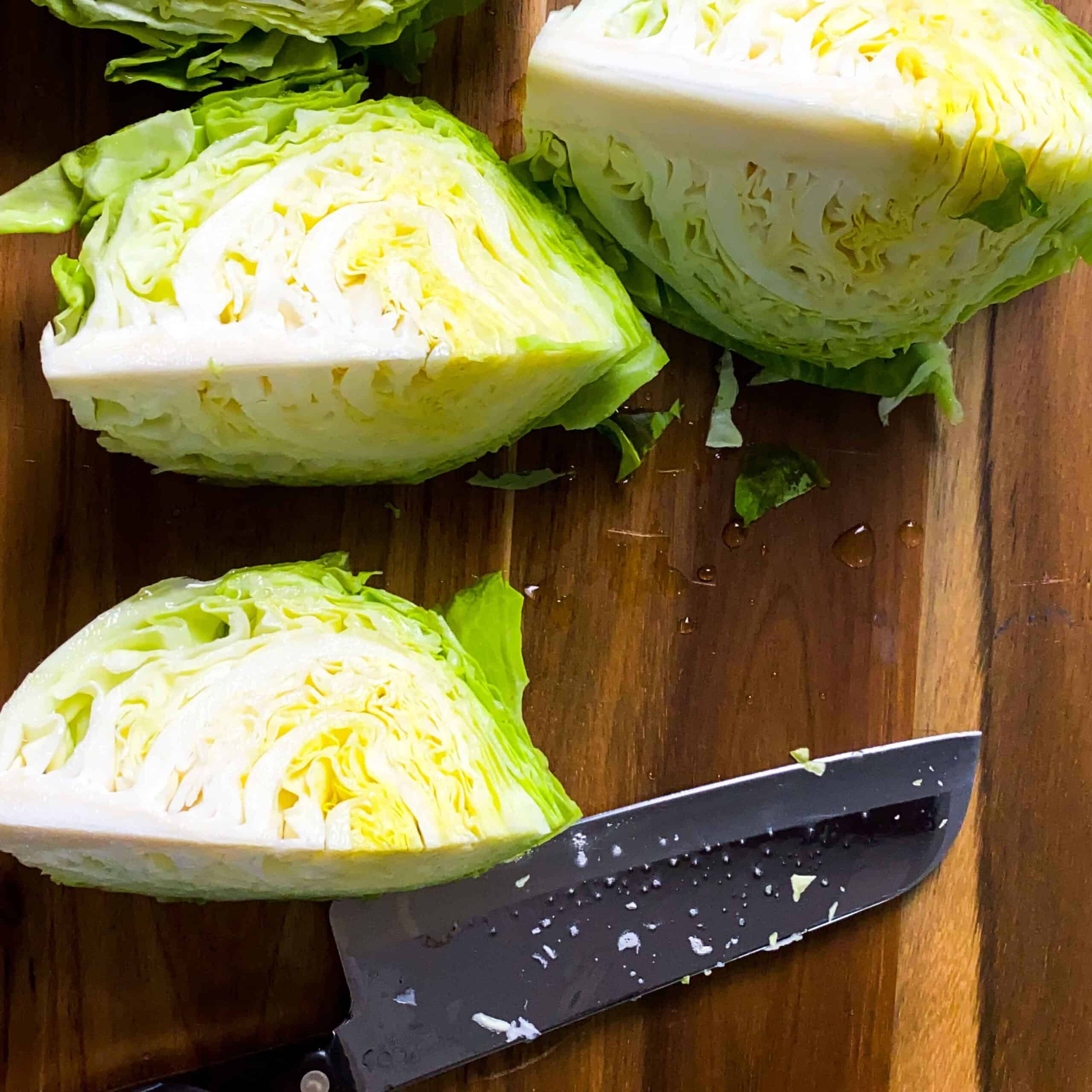
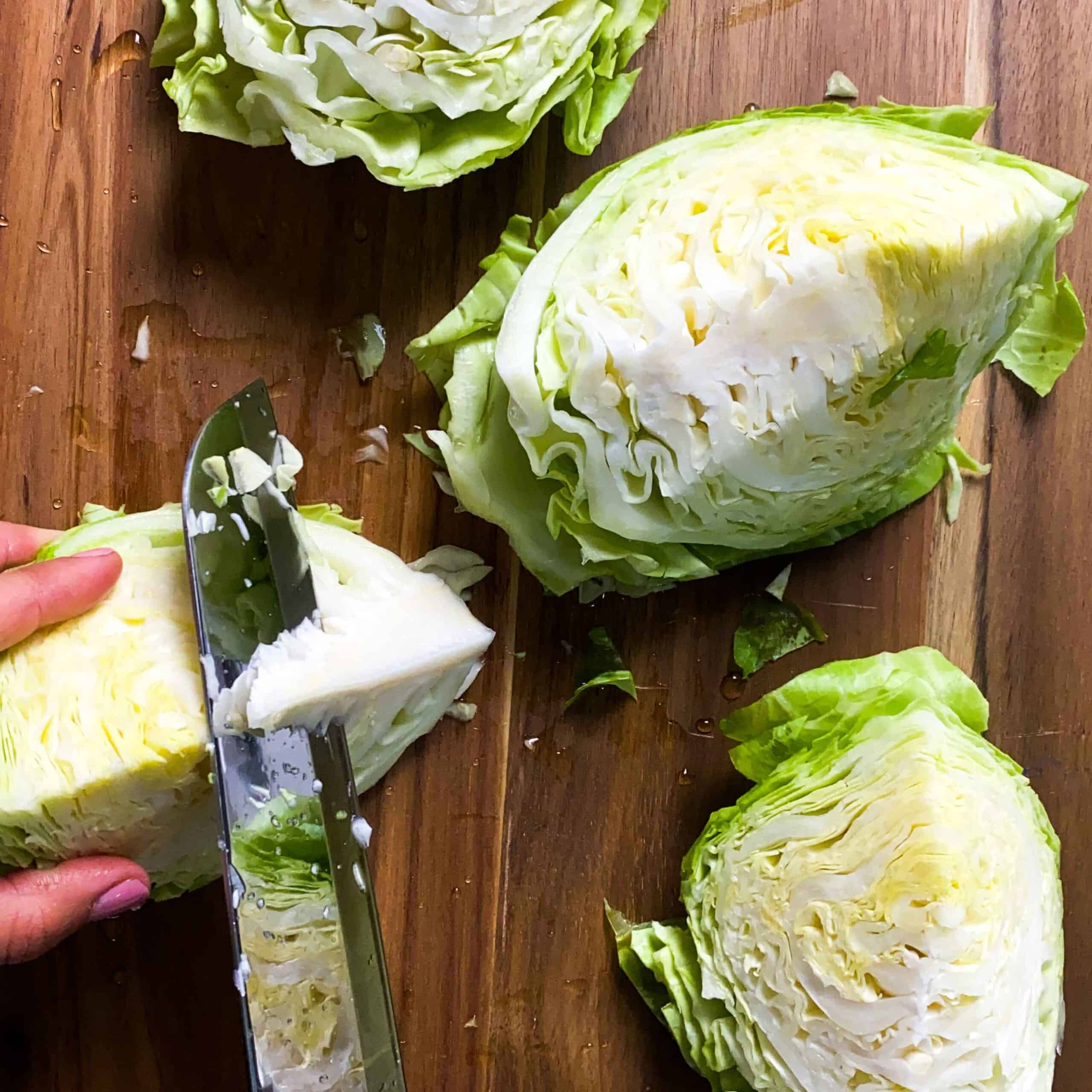
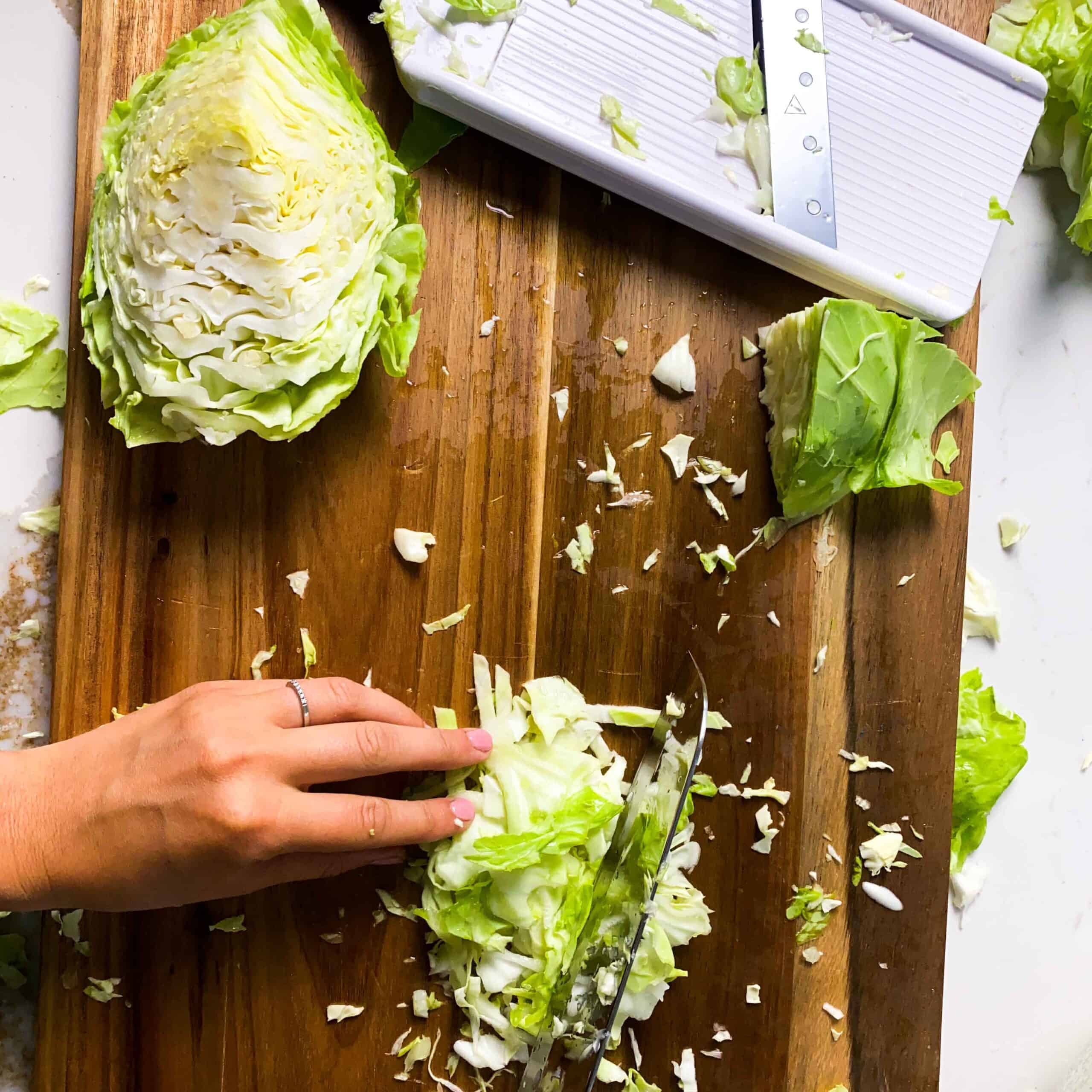
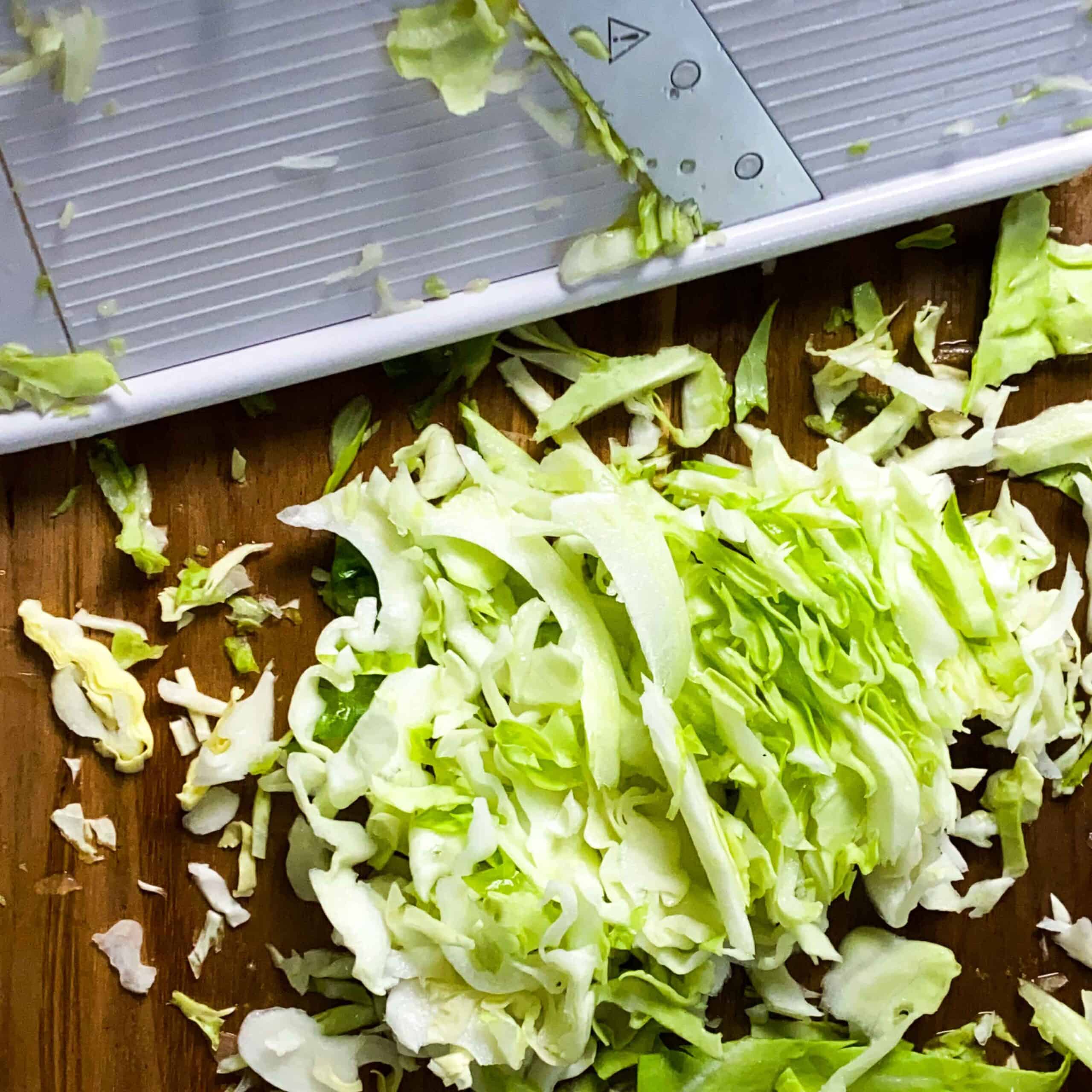
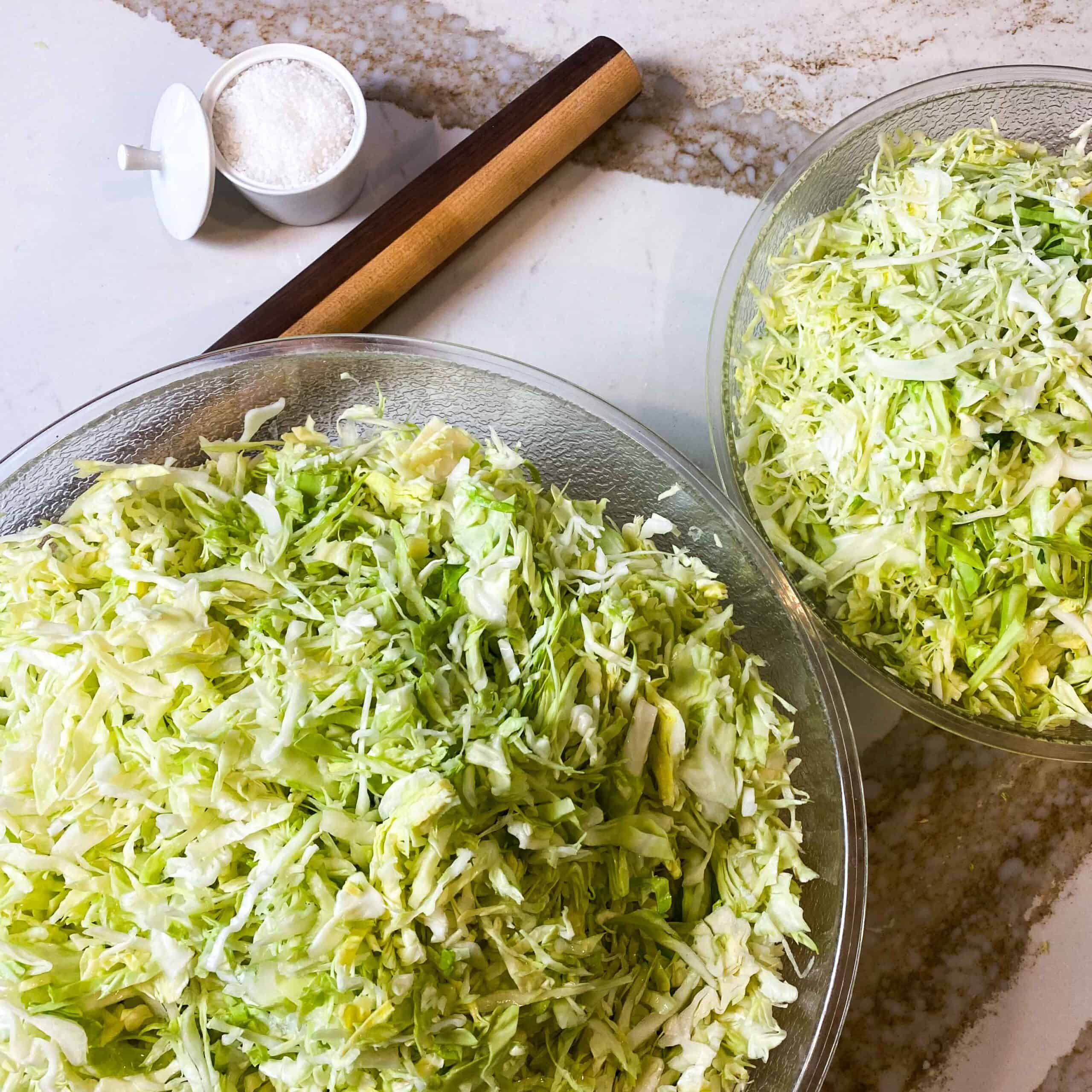


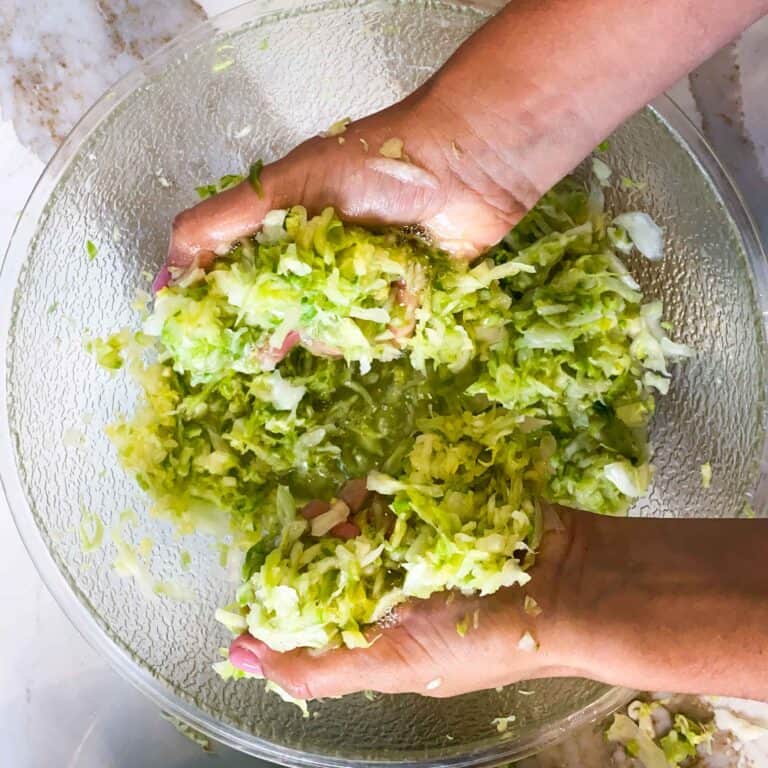
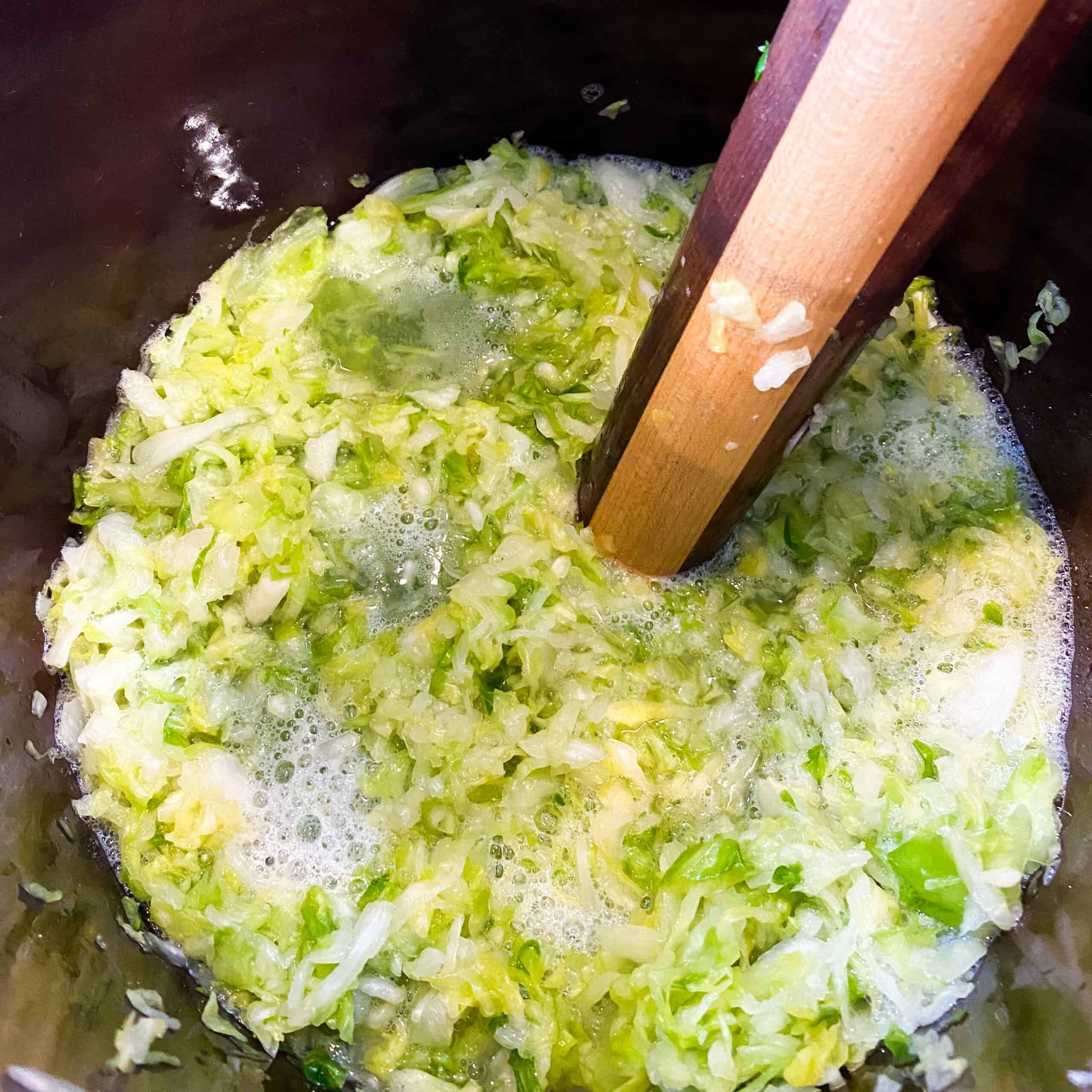
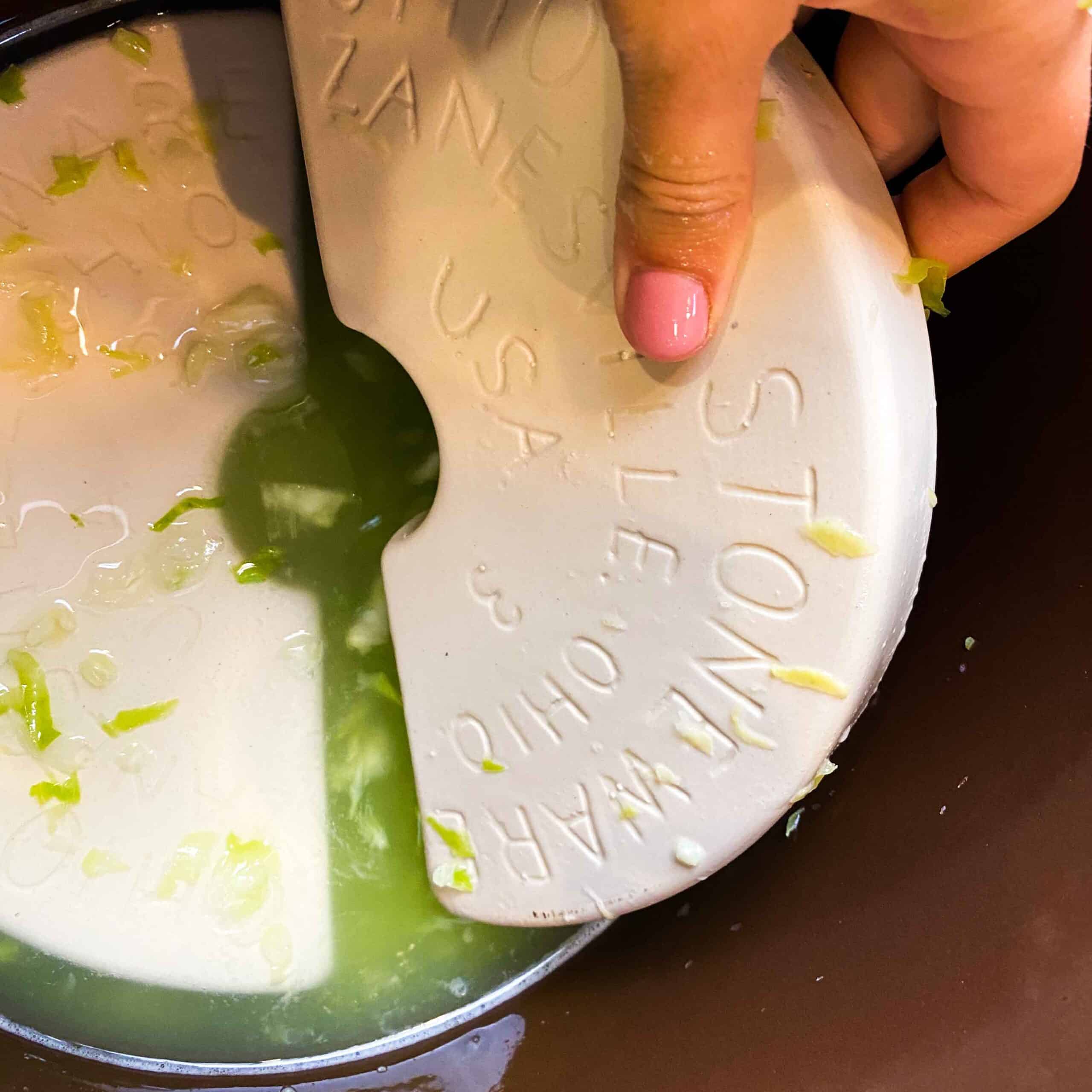
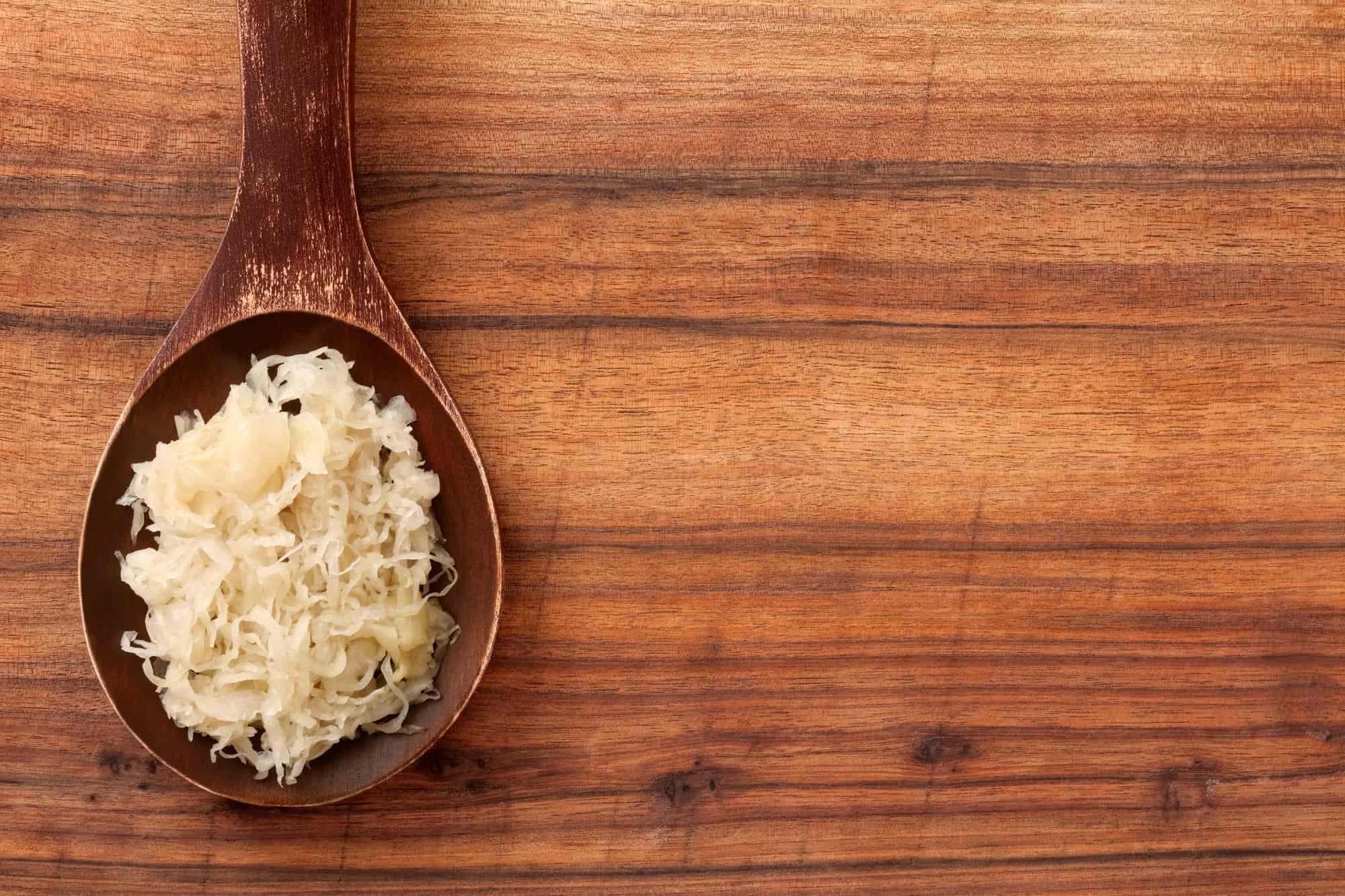
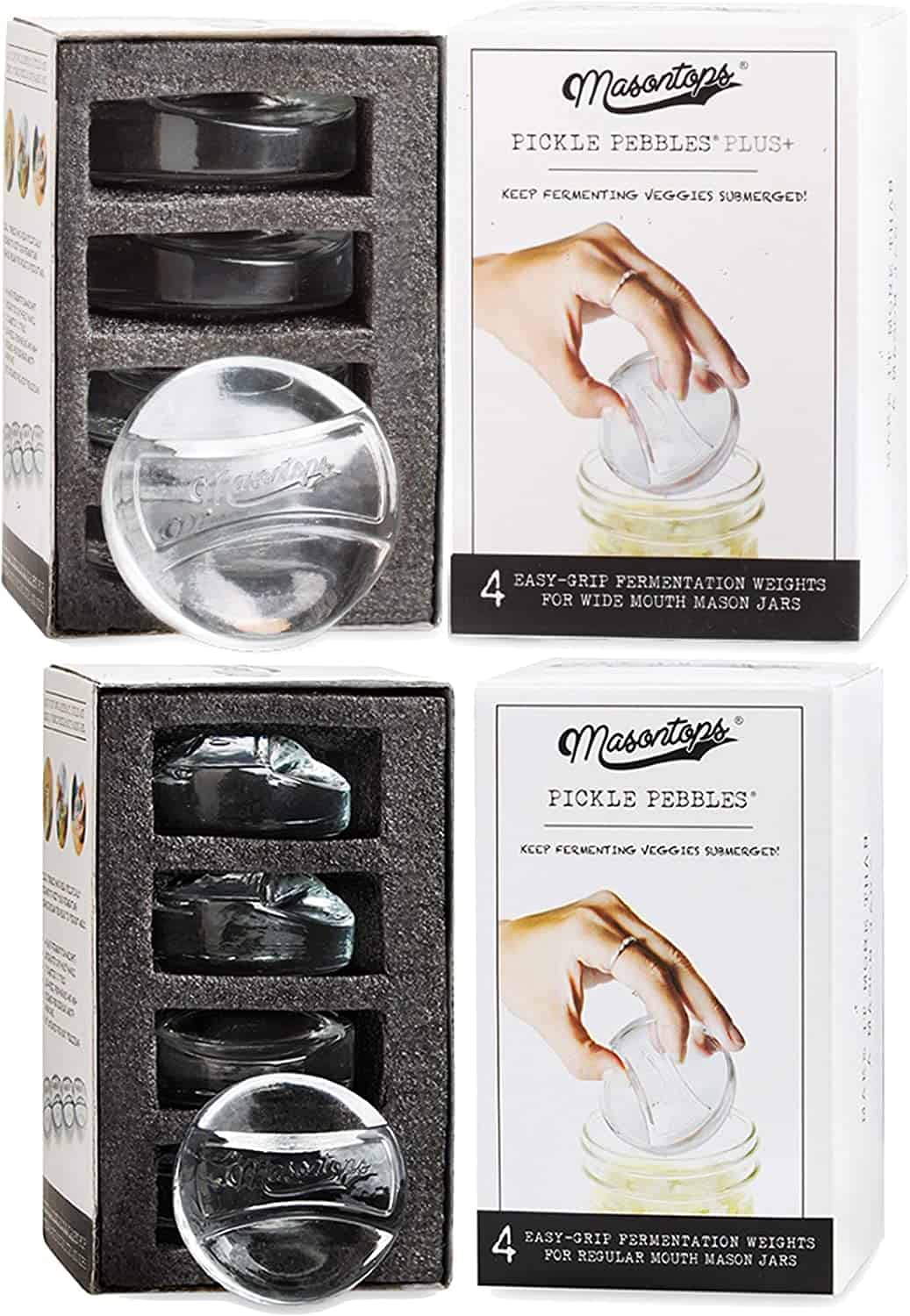
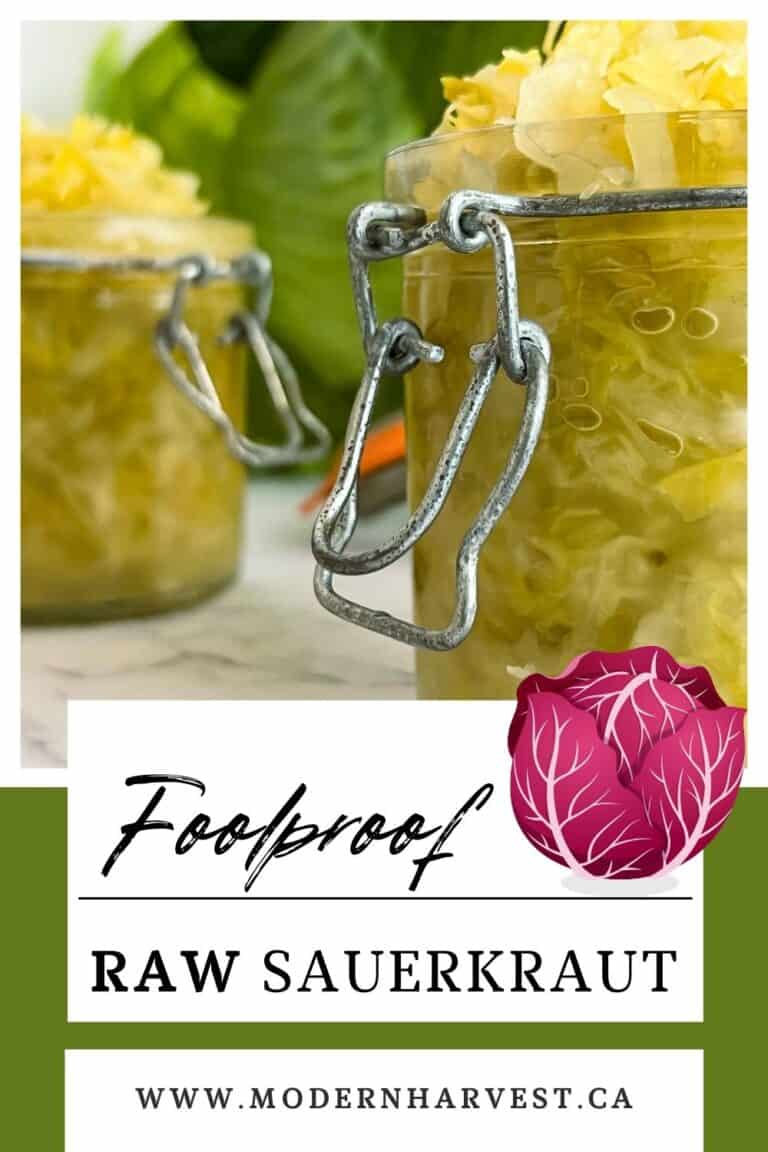
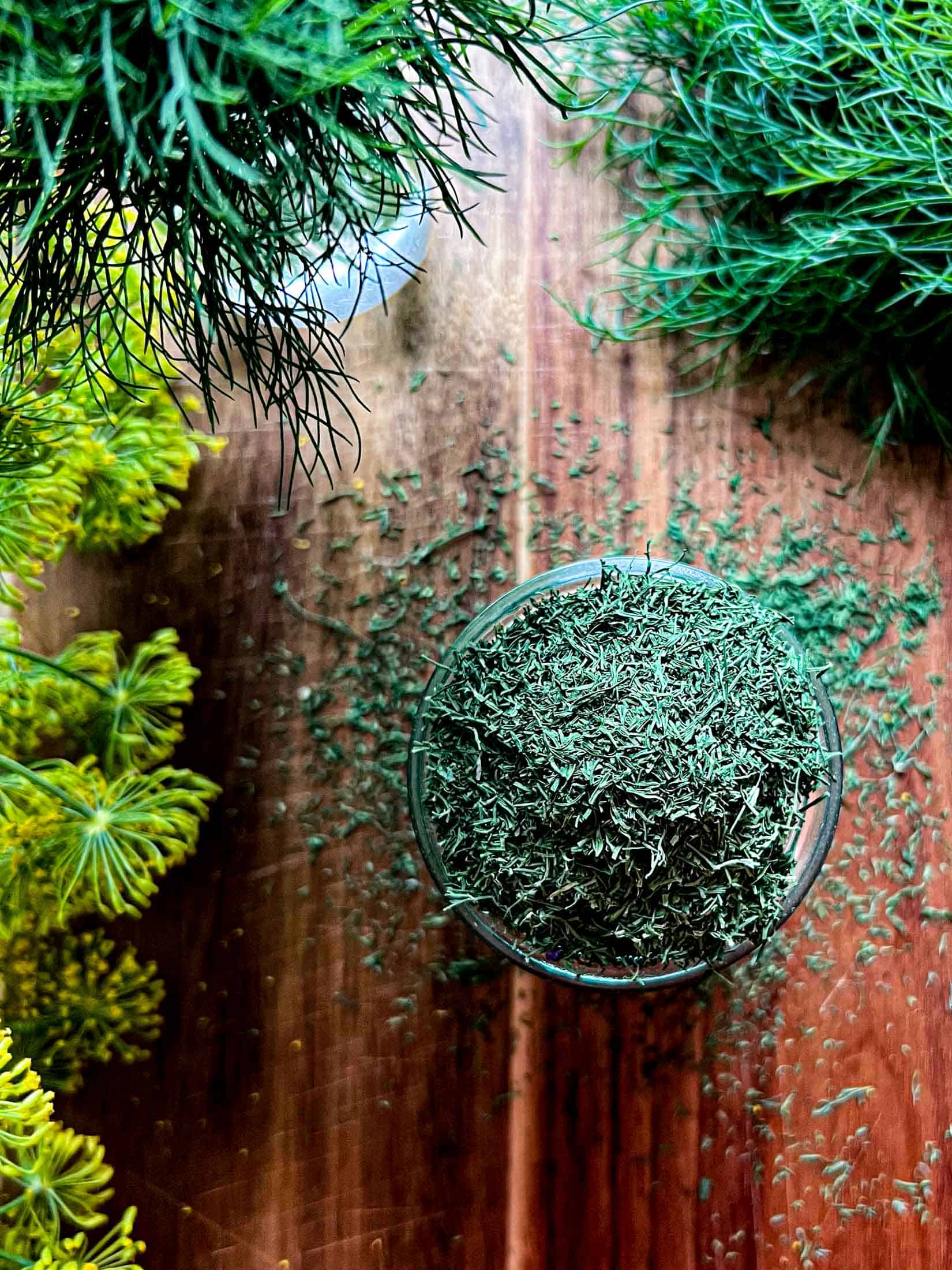

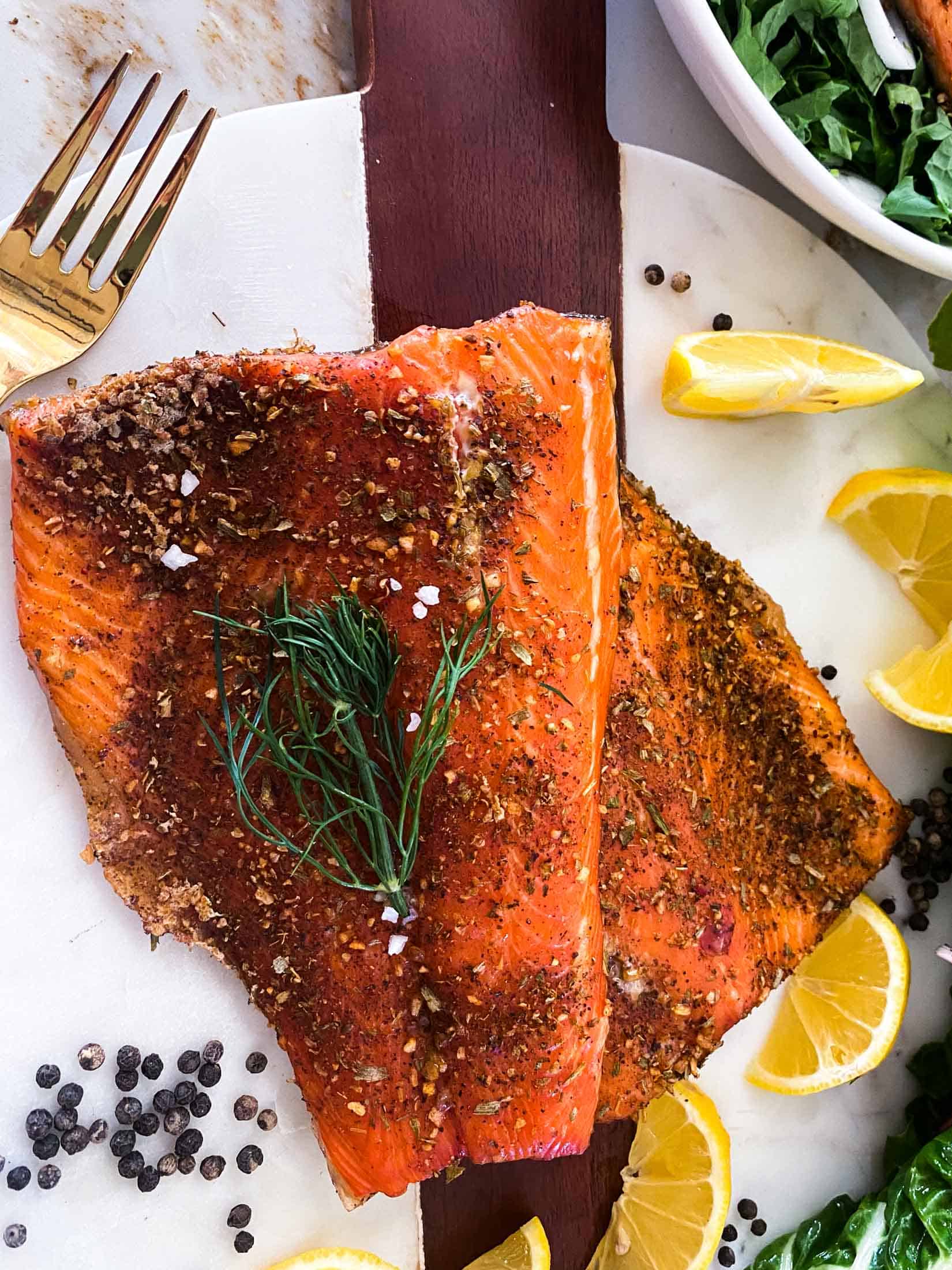
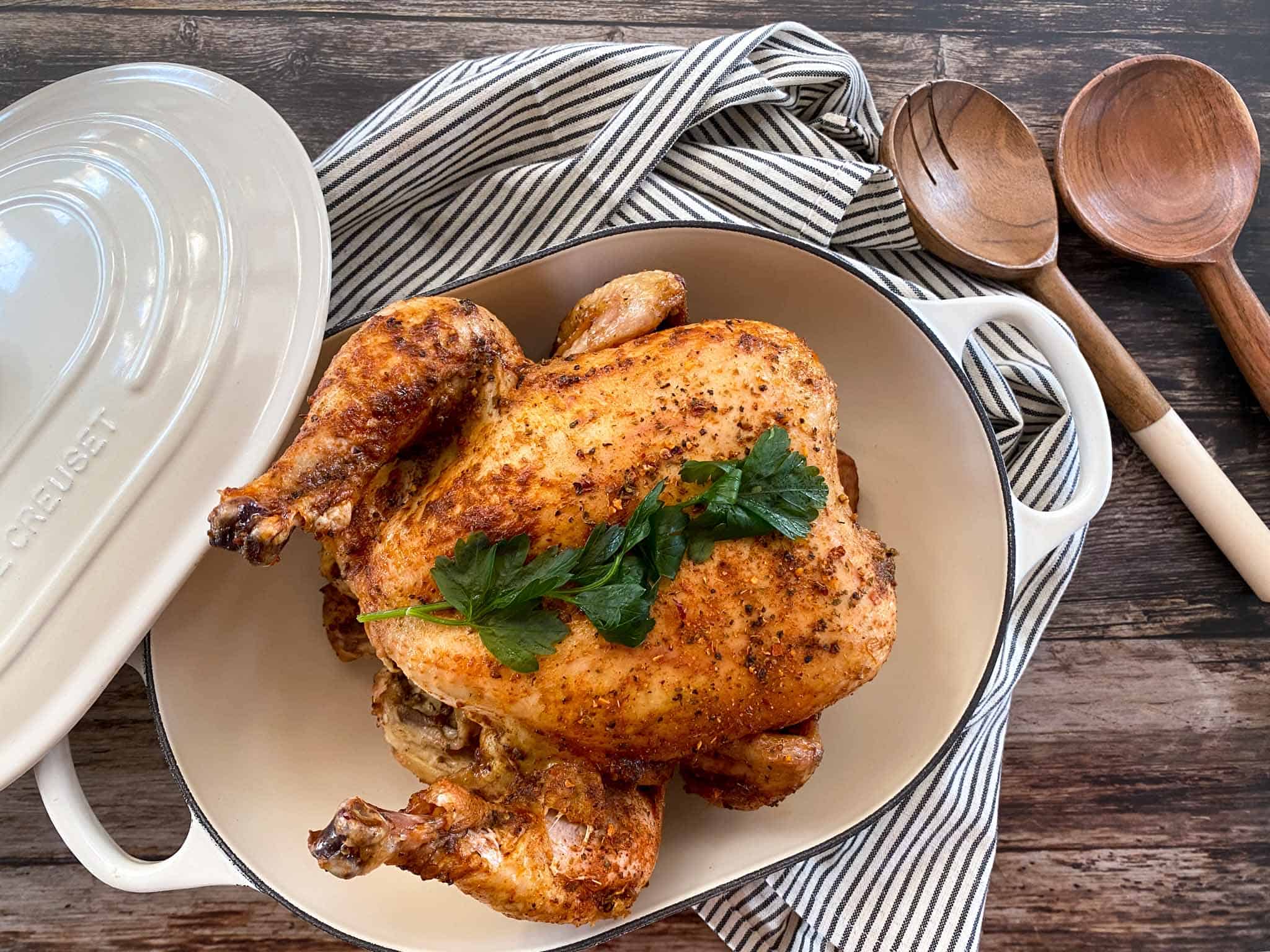
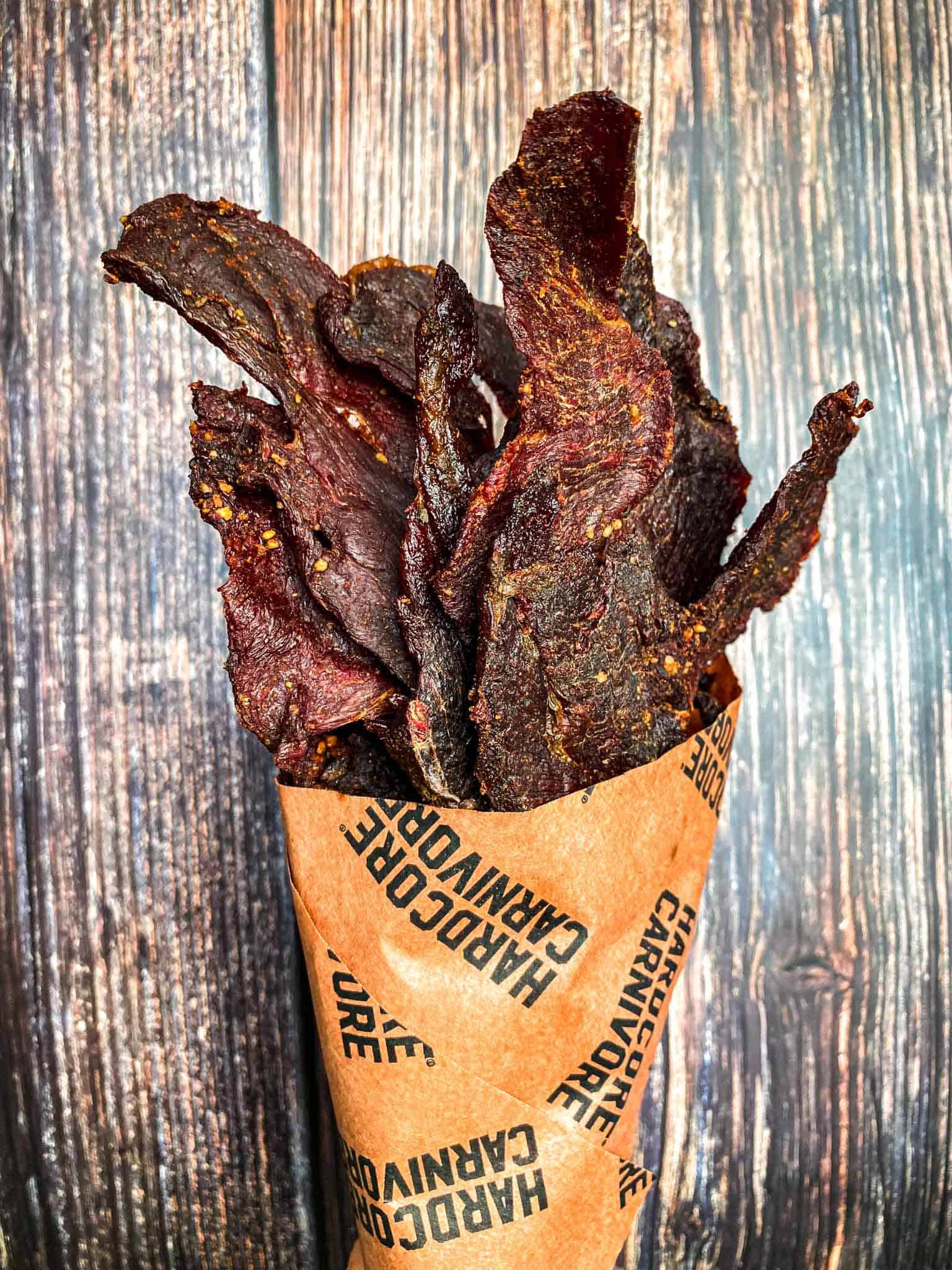
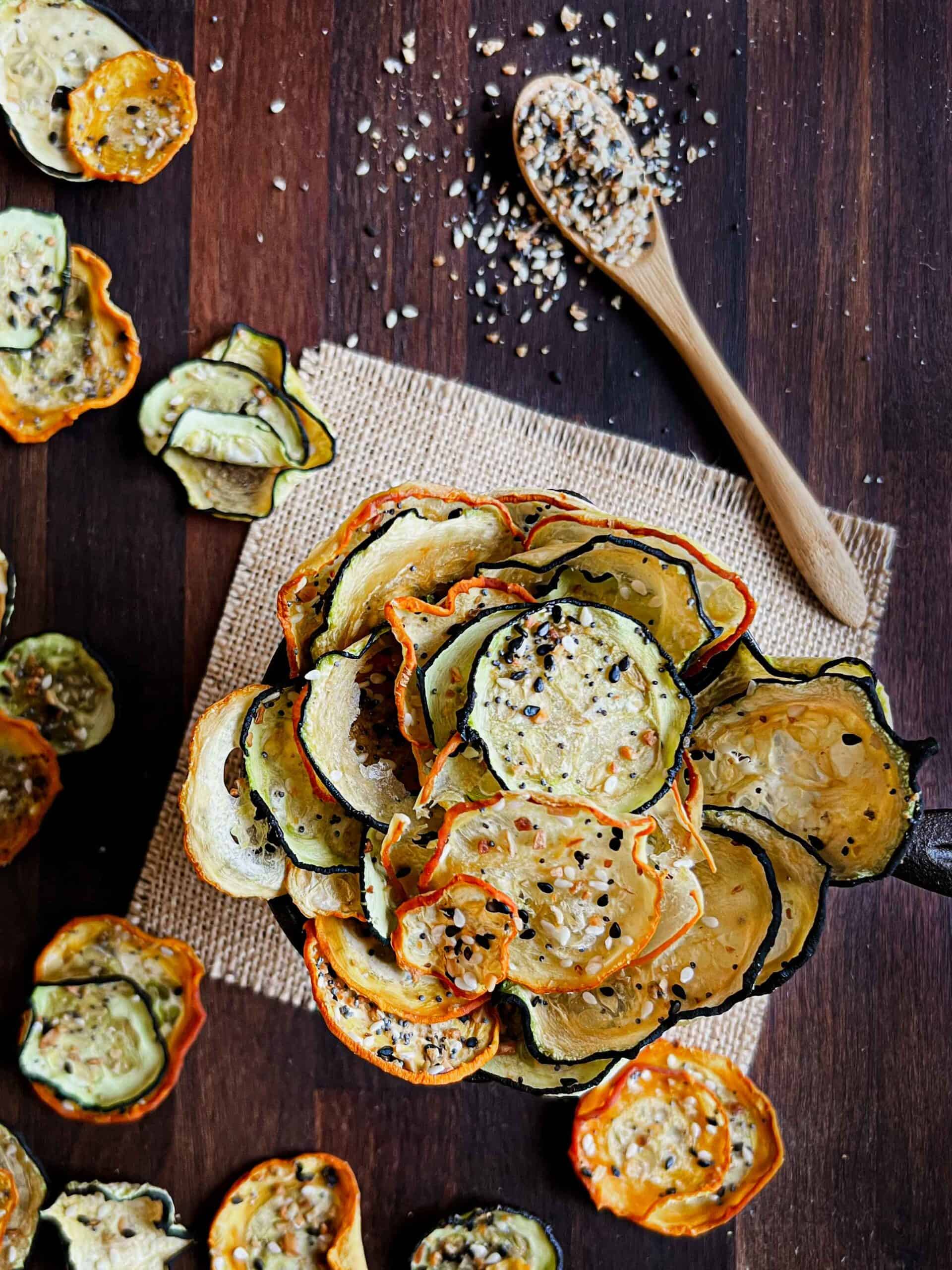
Thanks for the recipe- I was under the impression that you had to make extra brine but I love that this is two ingredients- literally anyone could do it!
Just tried this and it turned out so great! Cooked with some pork and tasted amazing! Thanks so much!
So simple + delish… I added a bit of dill and used purple cabbage instead of green. It is so pretty in my fridge and I know it wont last long… time for another batch!
That is an amazing recipe. The basic, classic recipe. One of the easiest way to prepare and one of best food ever. It is important to get the right cabbage also. The cabbage heads must be heavy, full, with the firm leaves but not lightweight and fluffy. I prepare cabbage in 2 ways. One is following this recipe and the second way cutting the whole cabbage heads in 4 parts, or 2 , depends how big are the cabbage heads. After fermenting you can shred the pieces of cabbage, add an onion and oil and voila- you have a delicious salad, different taste than shredded sauercraut. Or I split the heads in leaves, and cook a delicious stuffed cabbage leaves (for stuffing using chopped meat – any kind, onions, carrots, dill, tomato paste and rice) . Absolutely unique delicious taste.
Hey Ole, I will definitely have to try the onion and oil combination with sauerkraut, it sounds delicious!
We also ferment whole heads in my family to make sour cabbage rolls with sticky rice and ground bacon. It is a twist on the cabbage rolls with ground beef, rice, and tomato soup.
Thank you for your wonderful words!